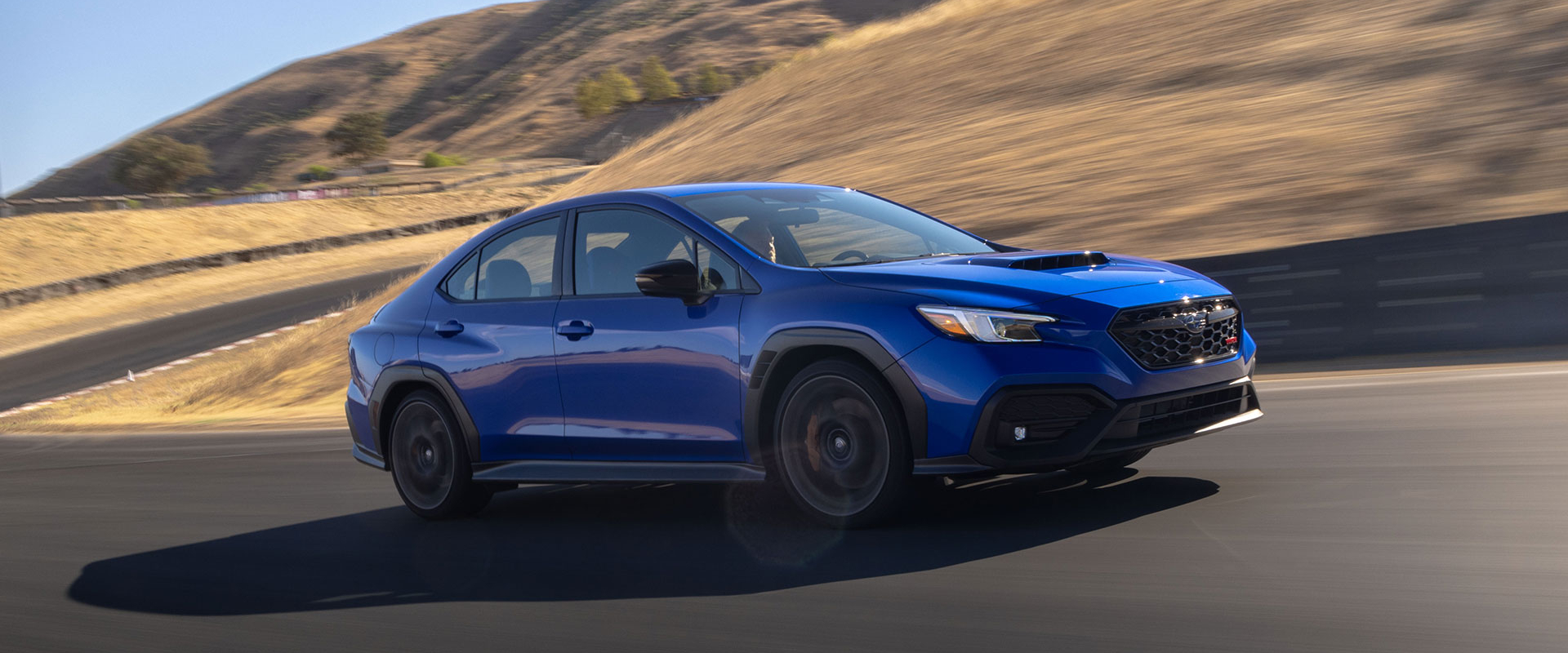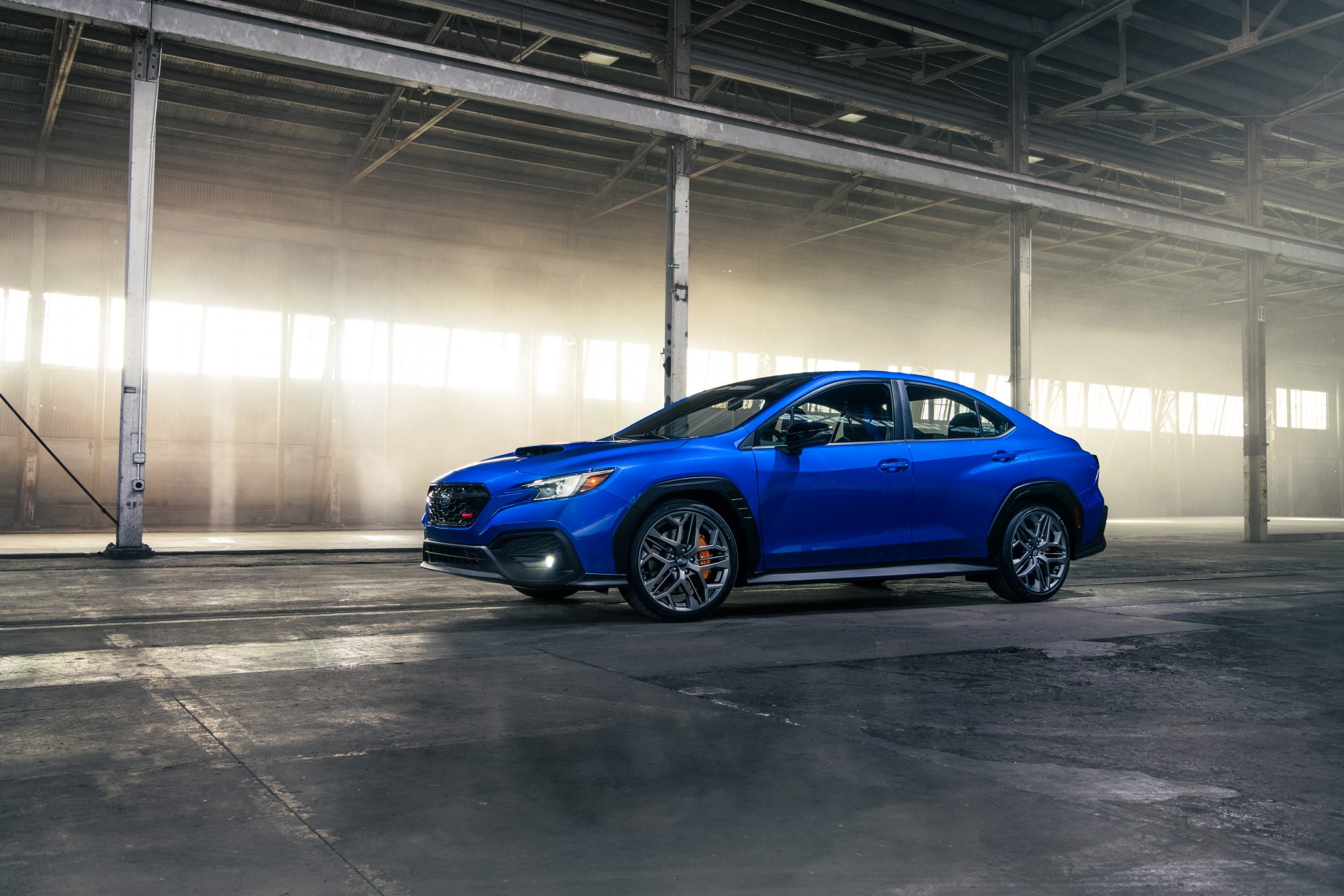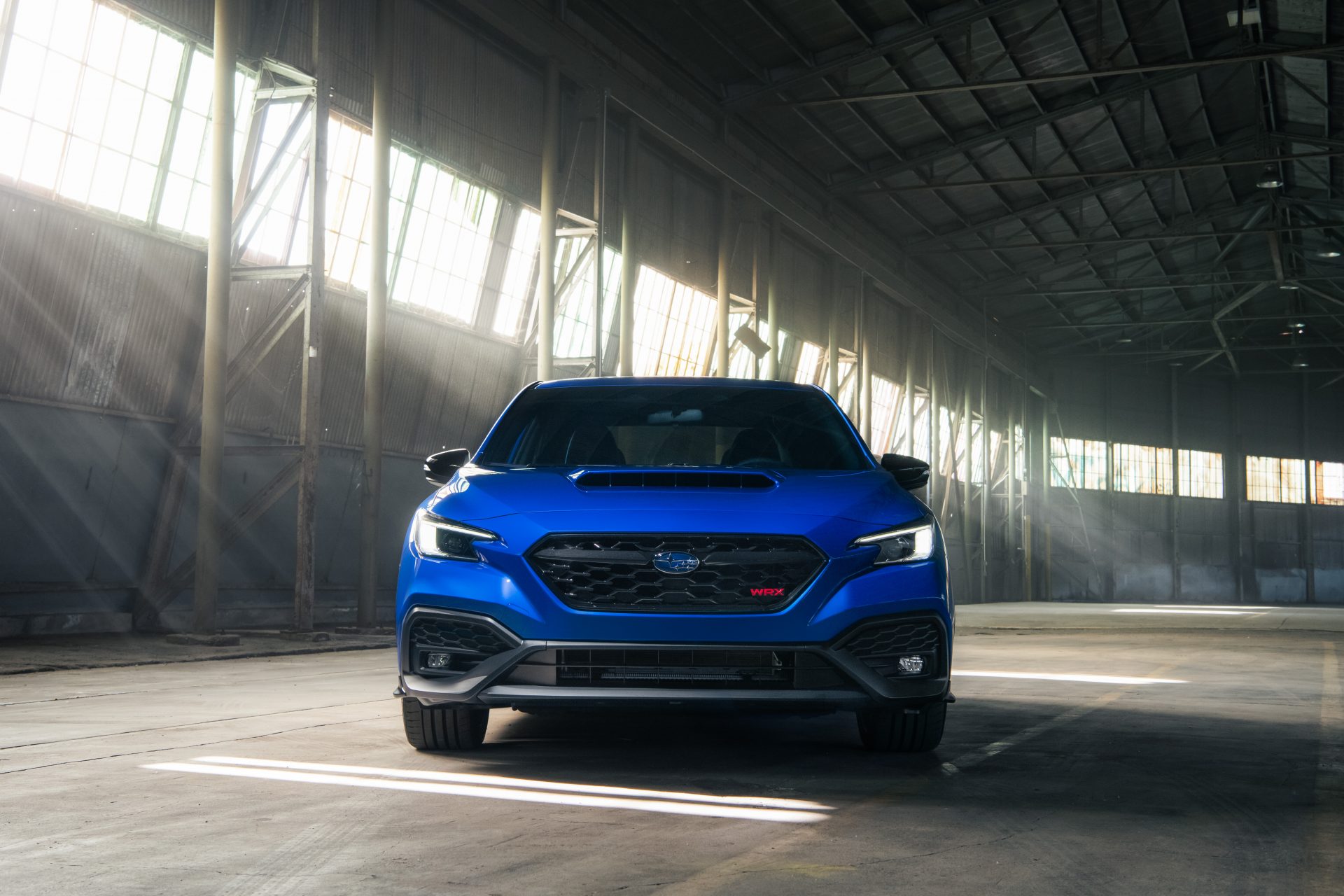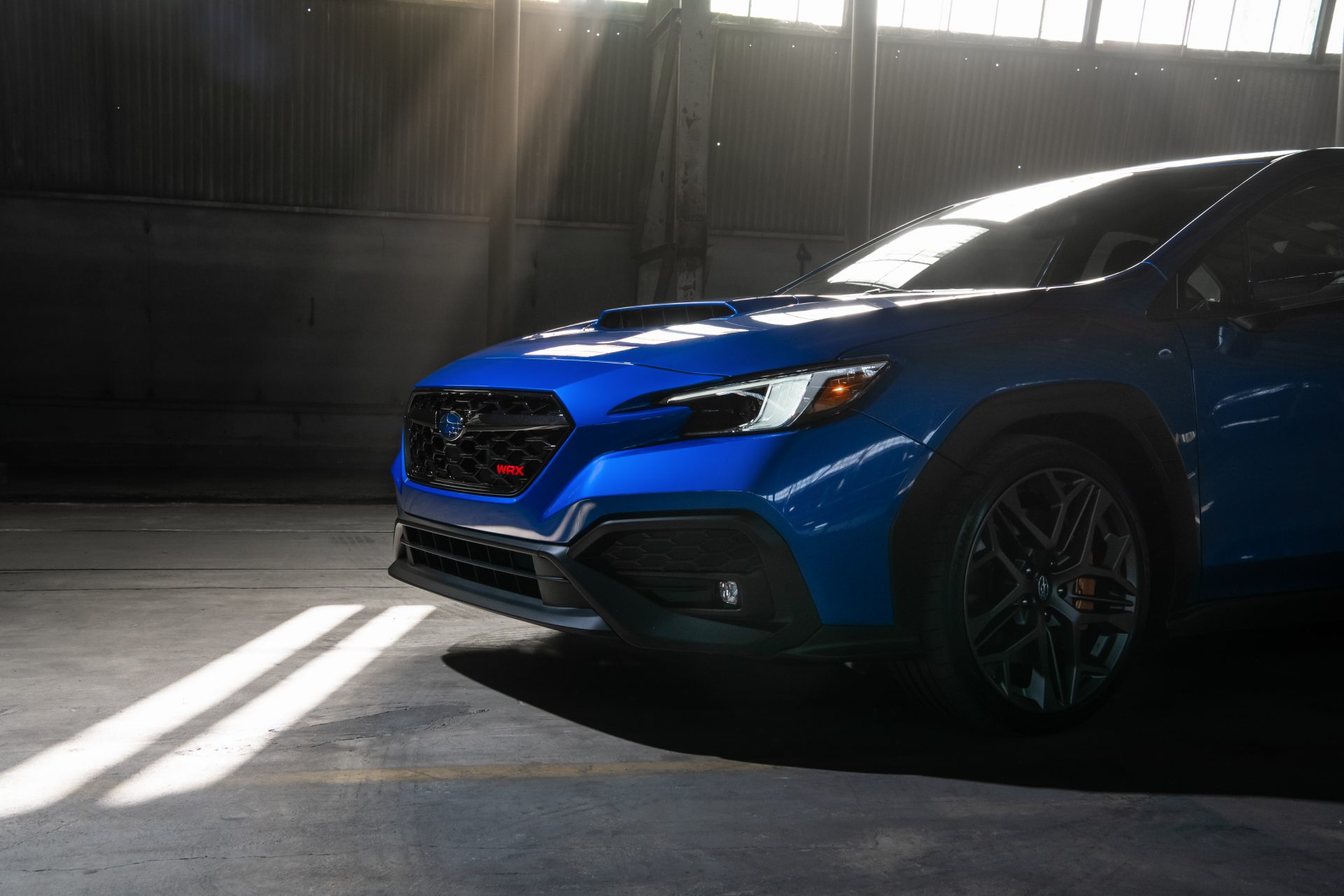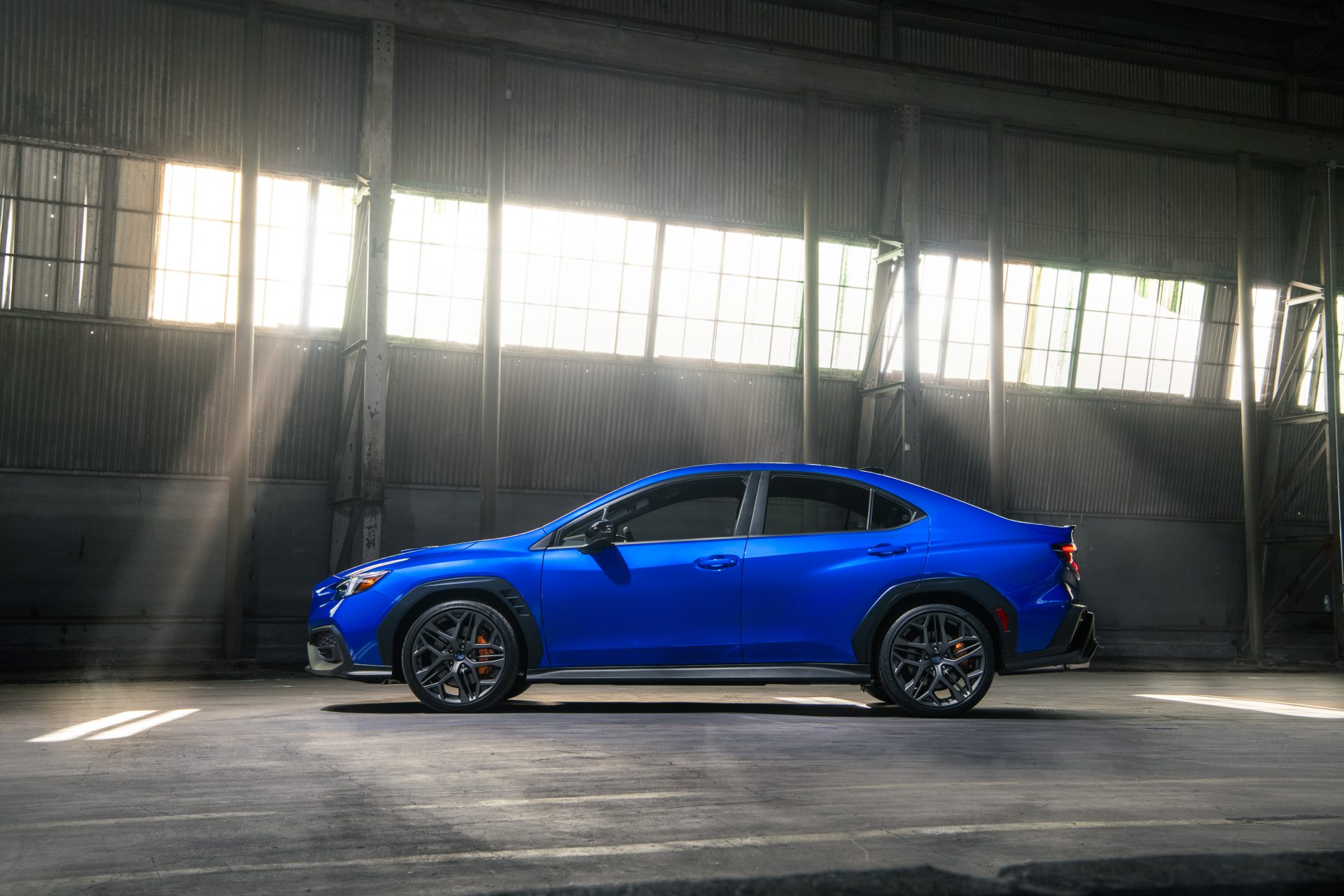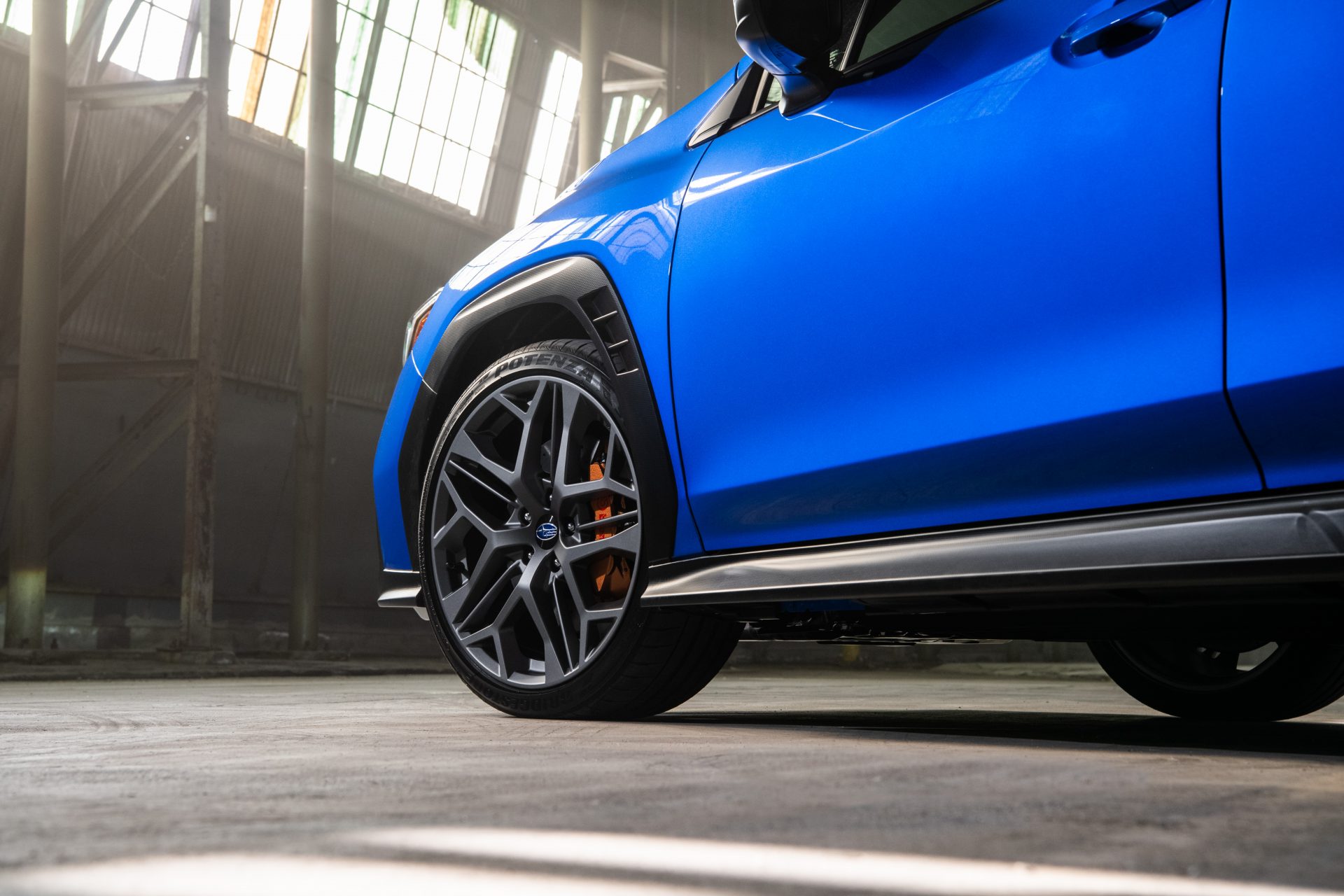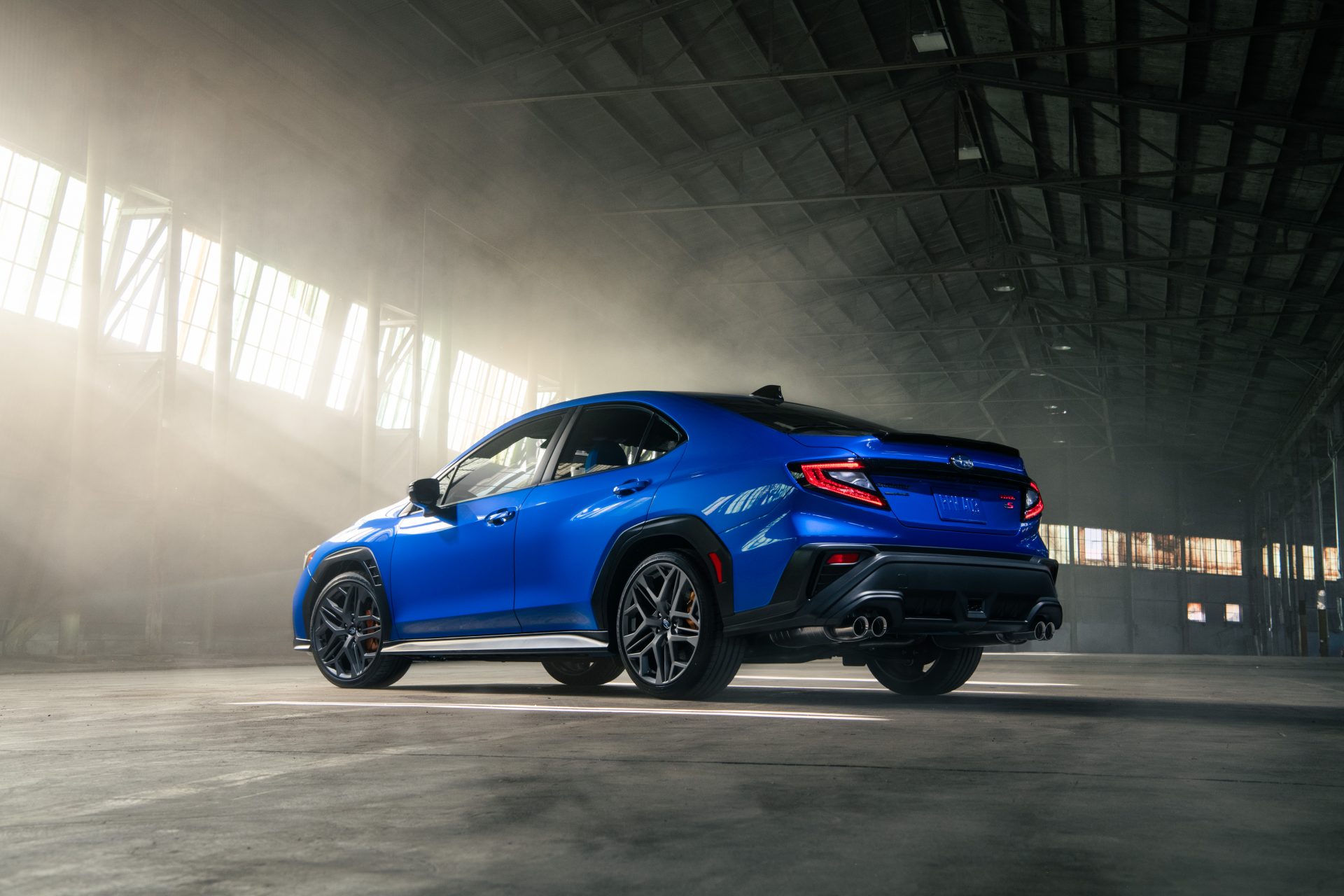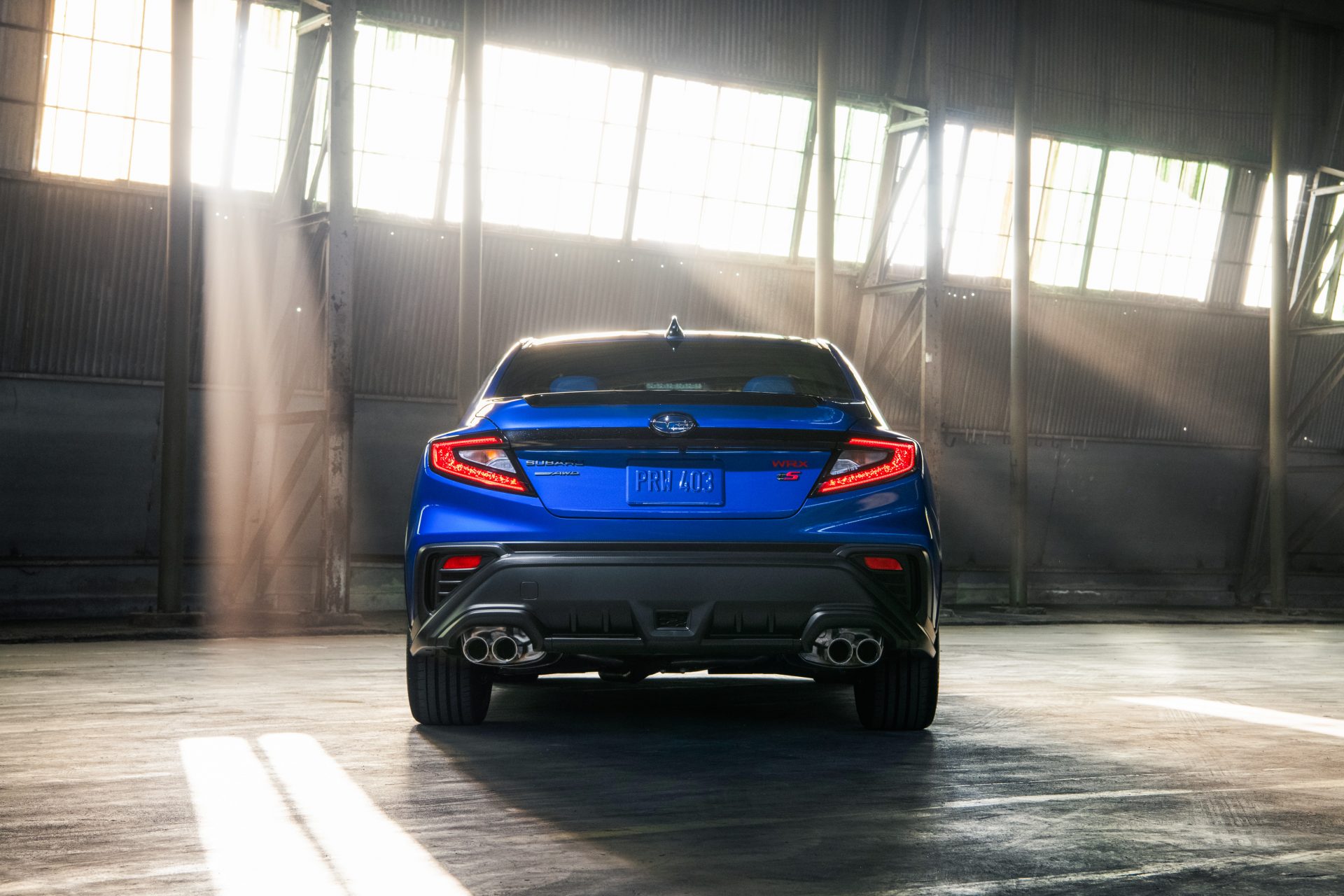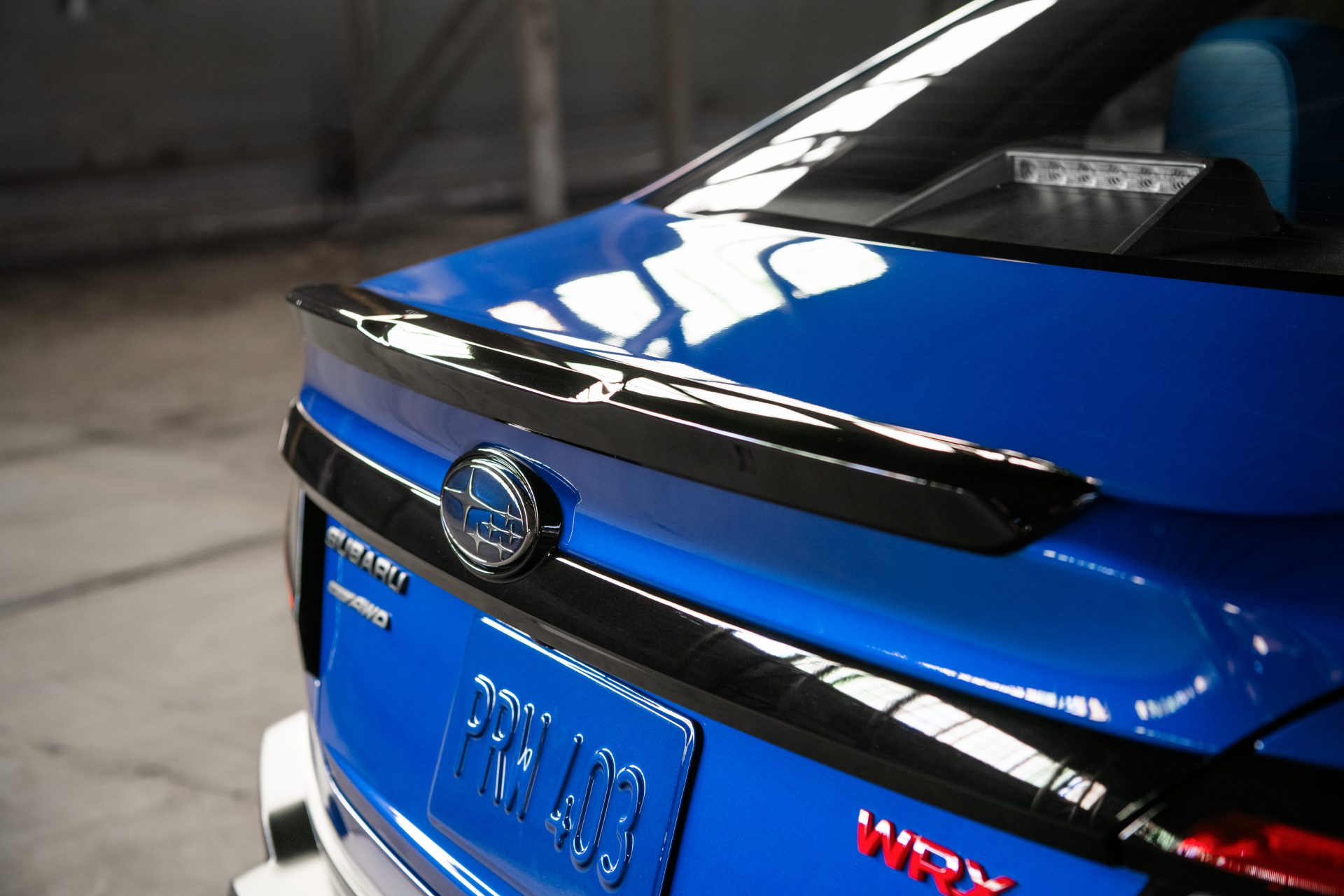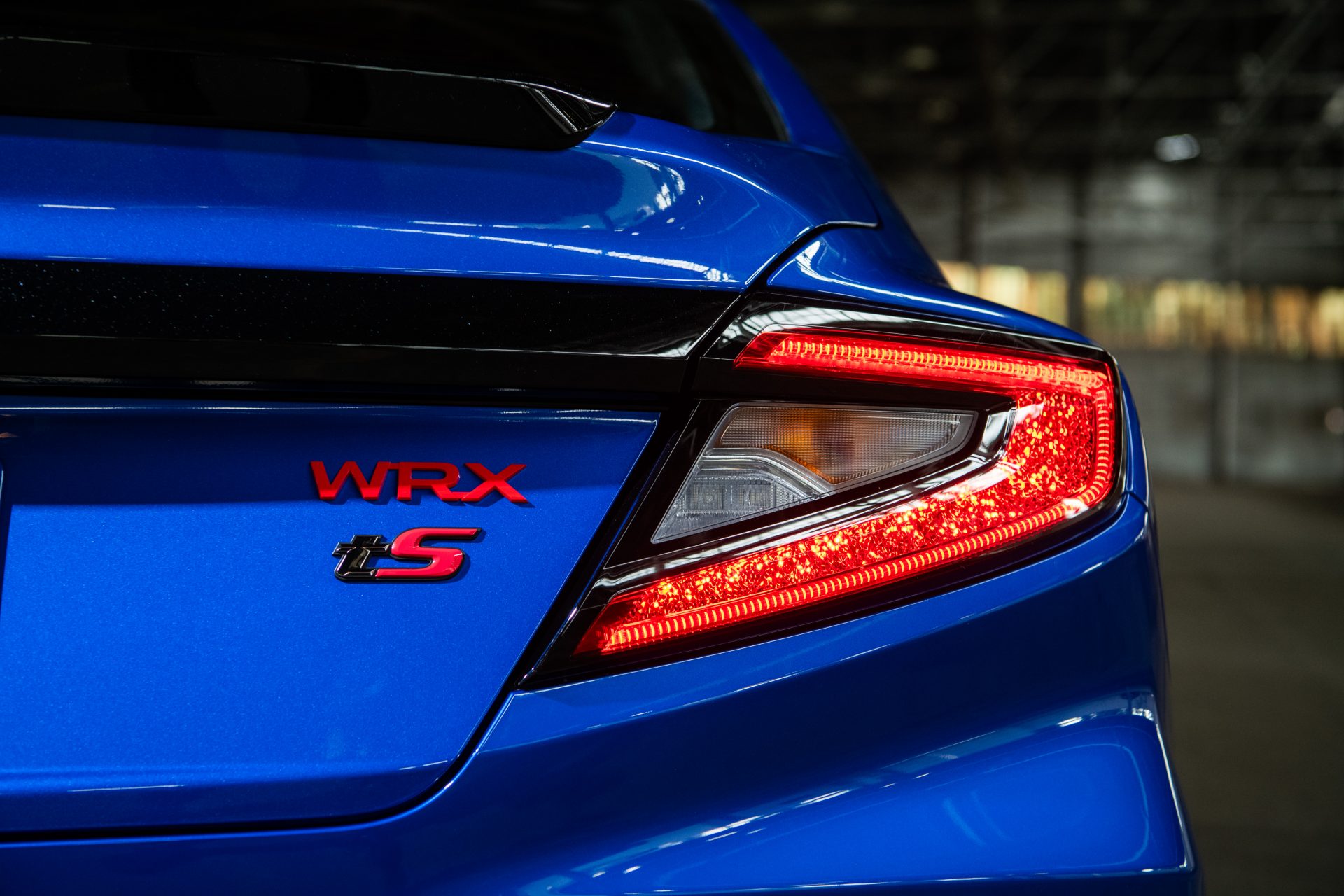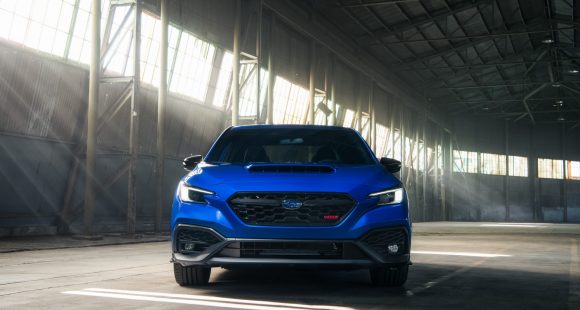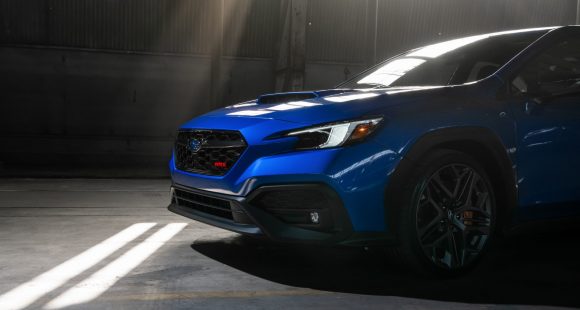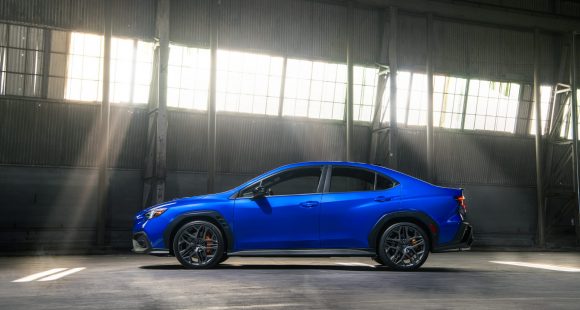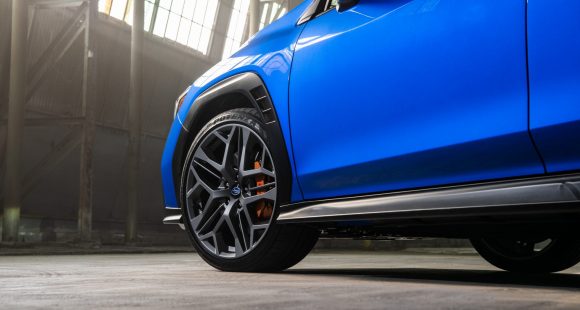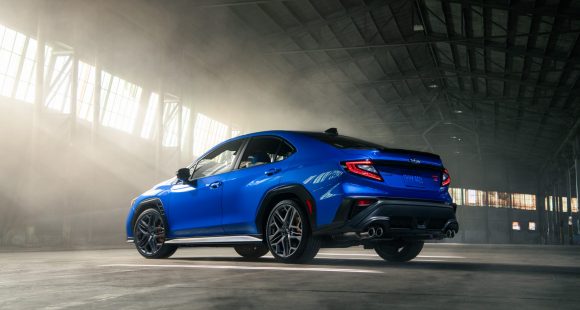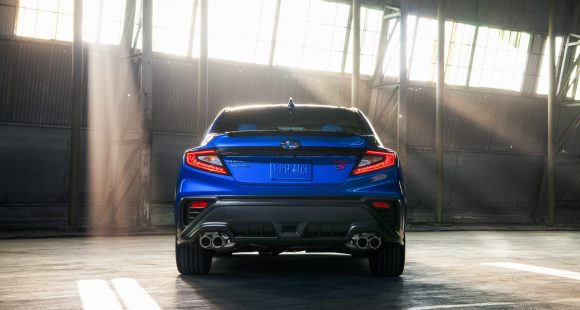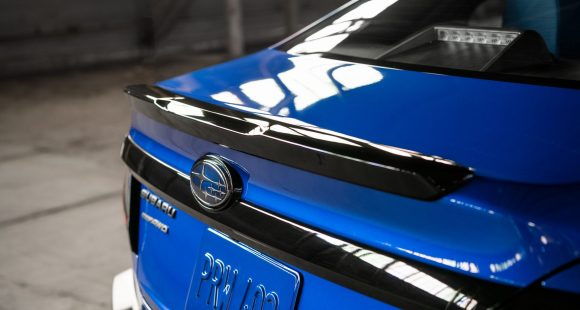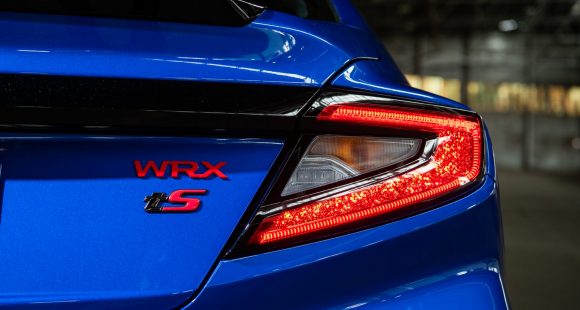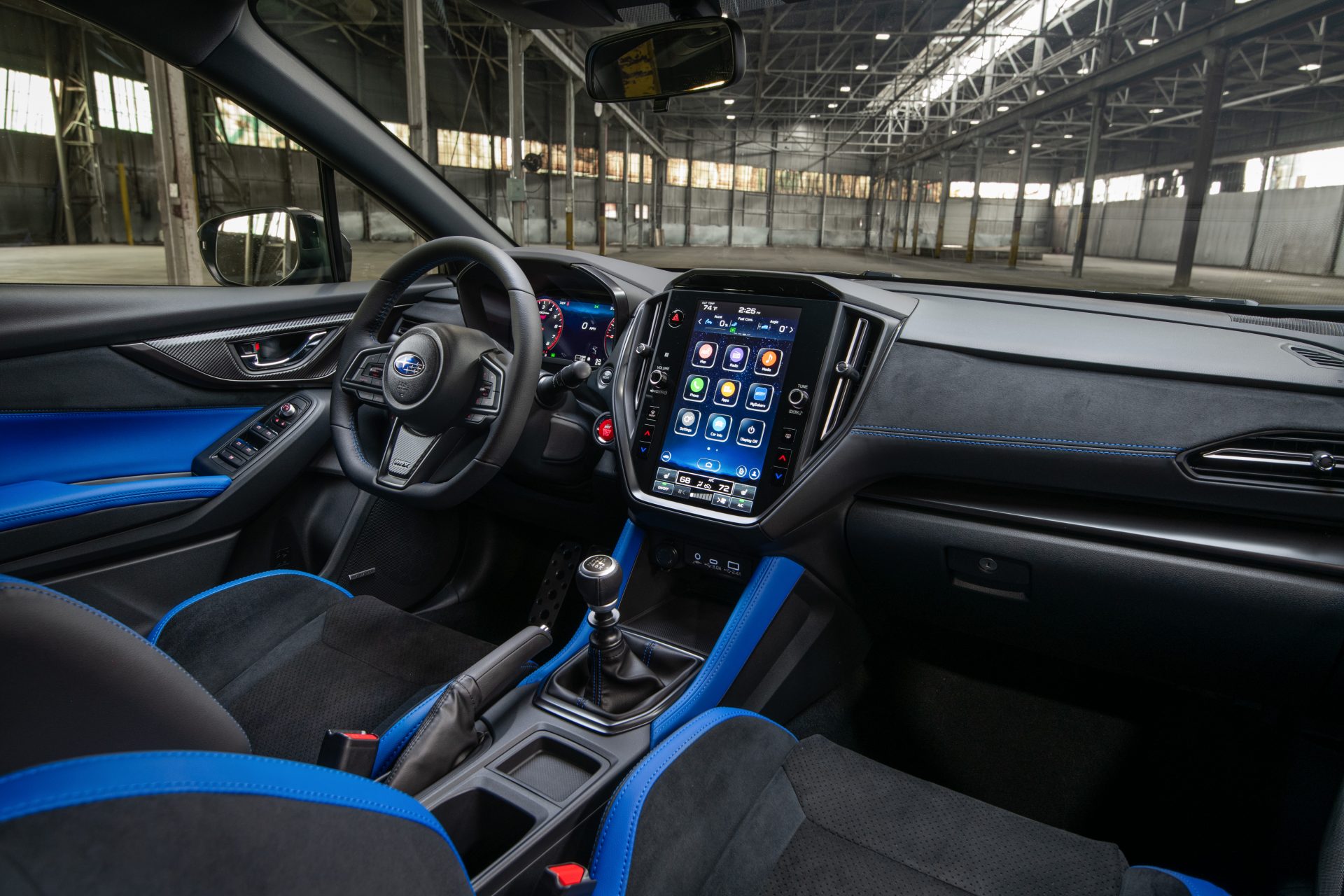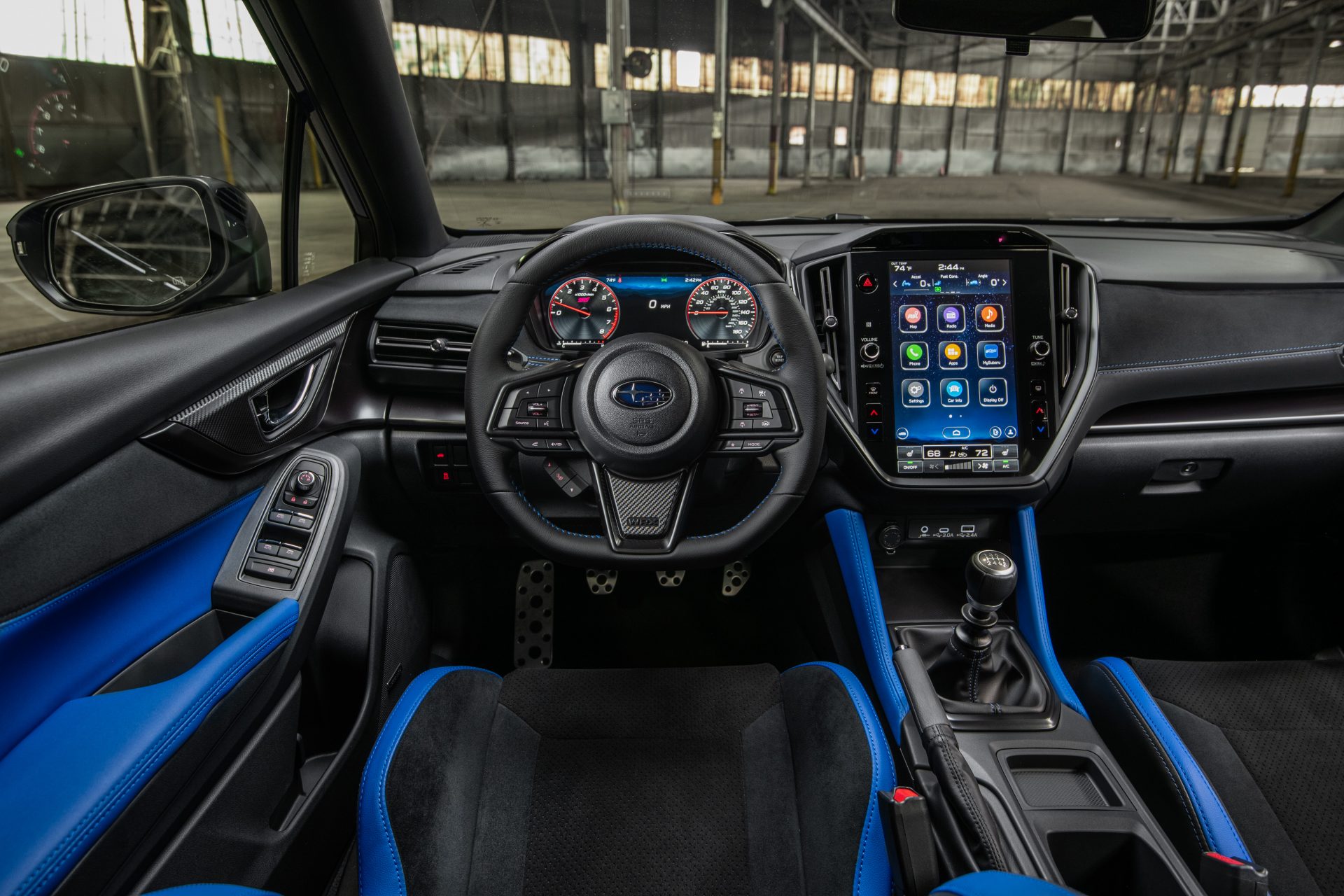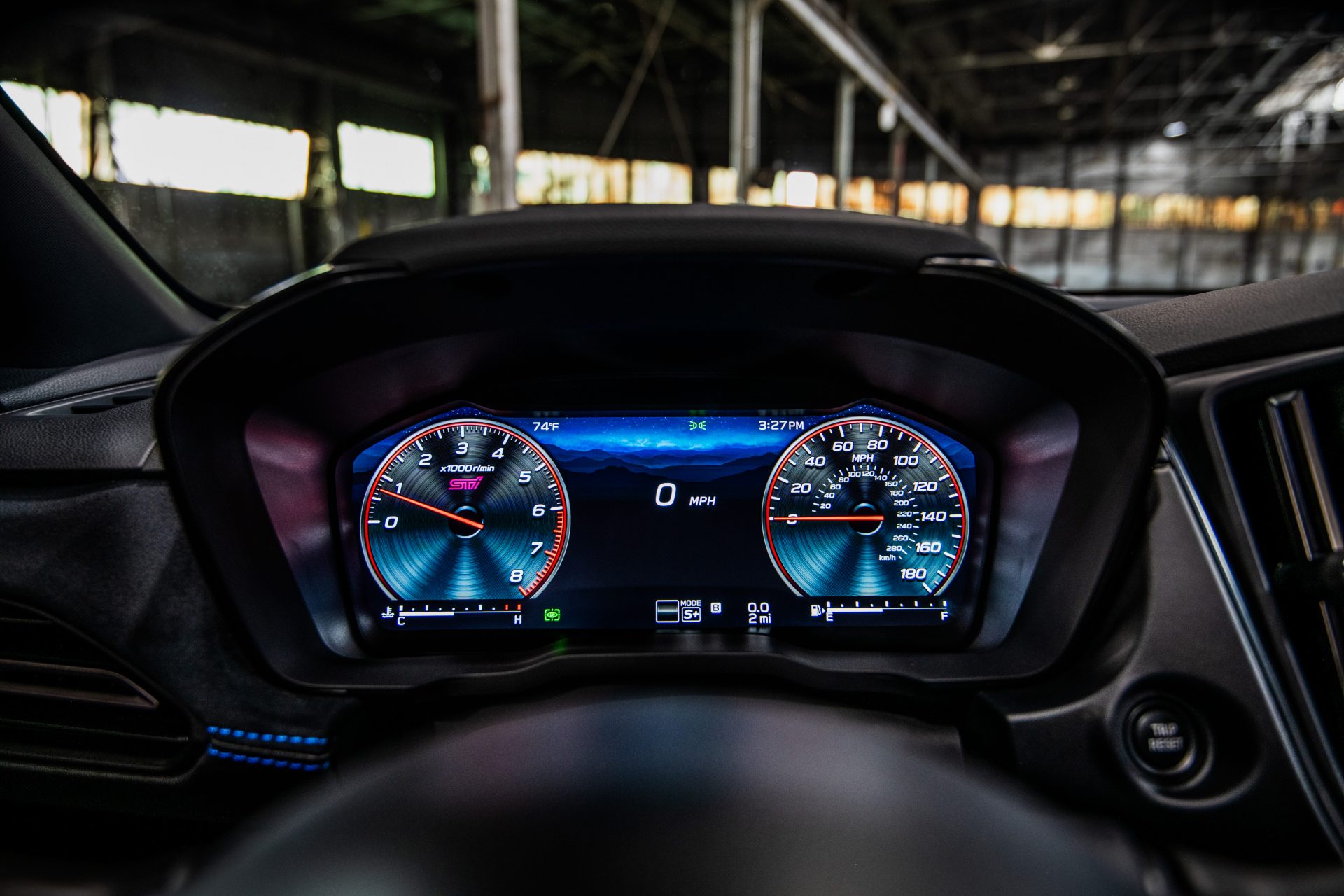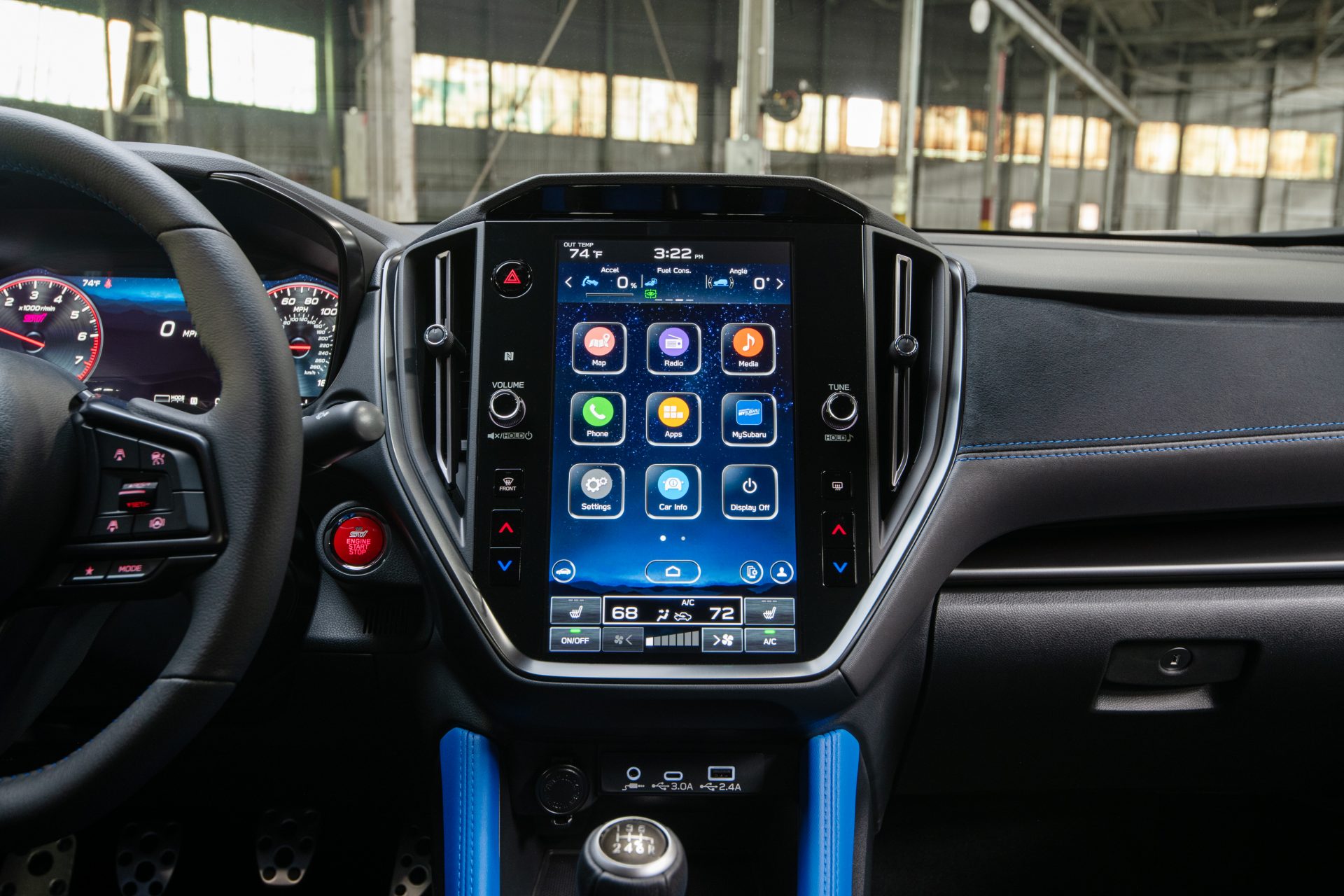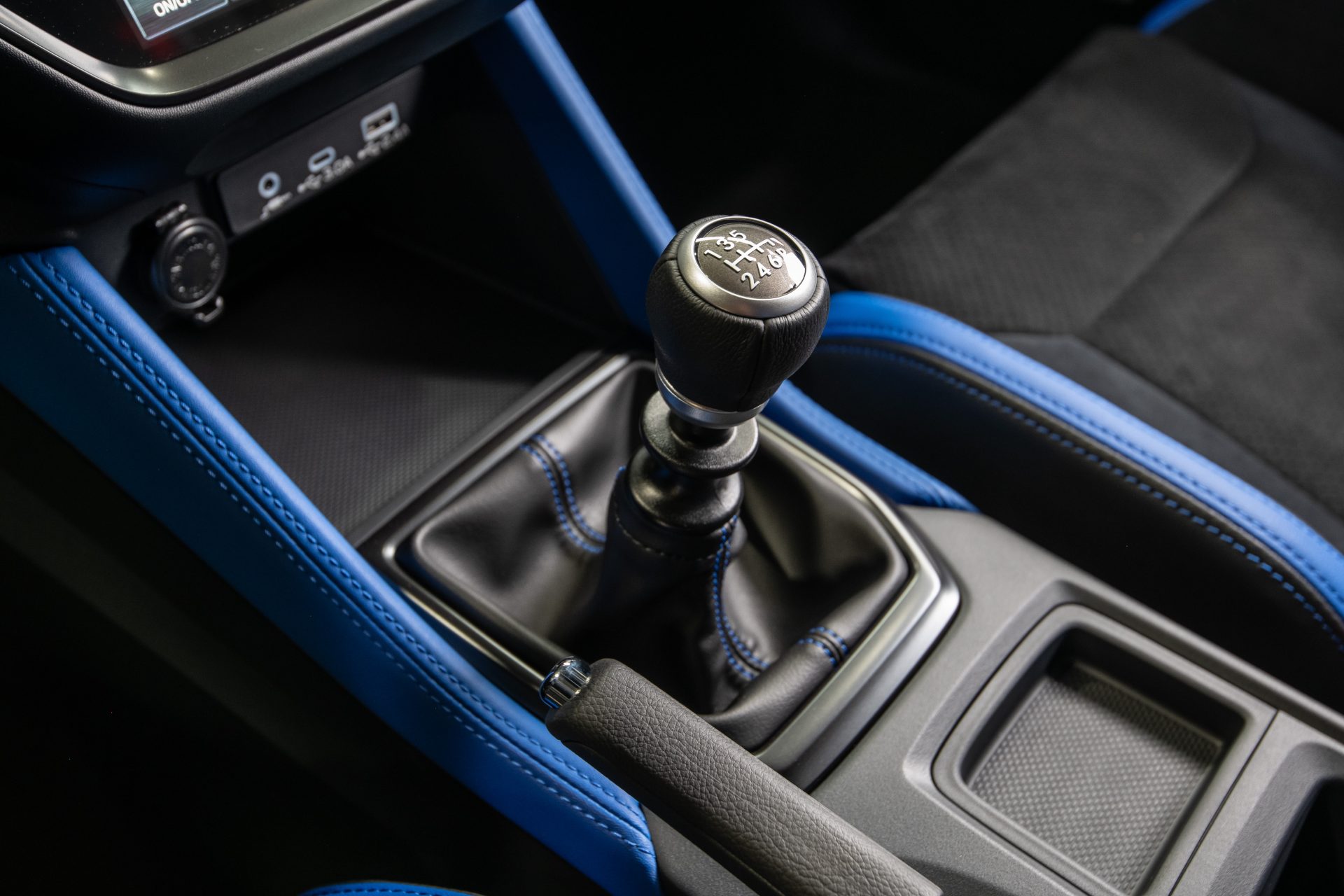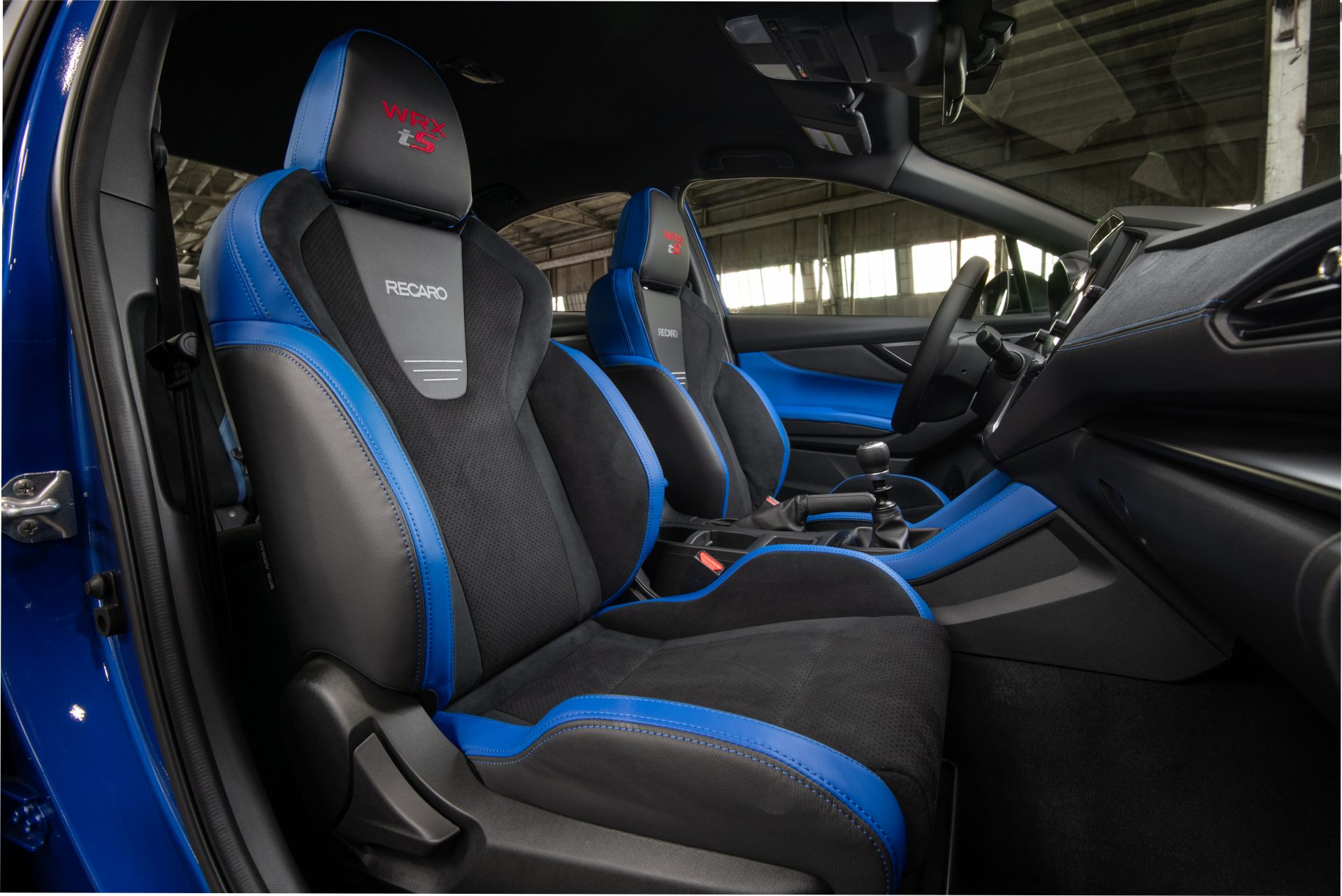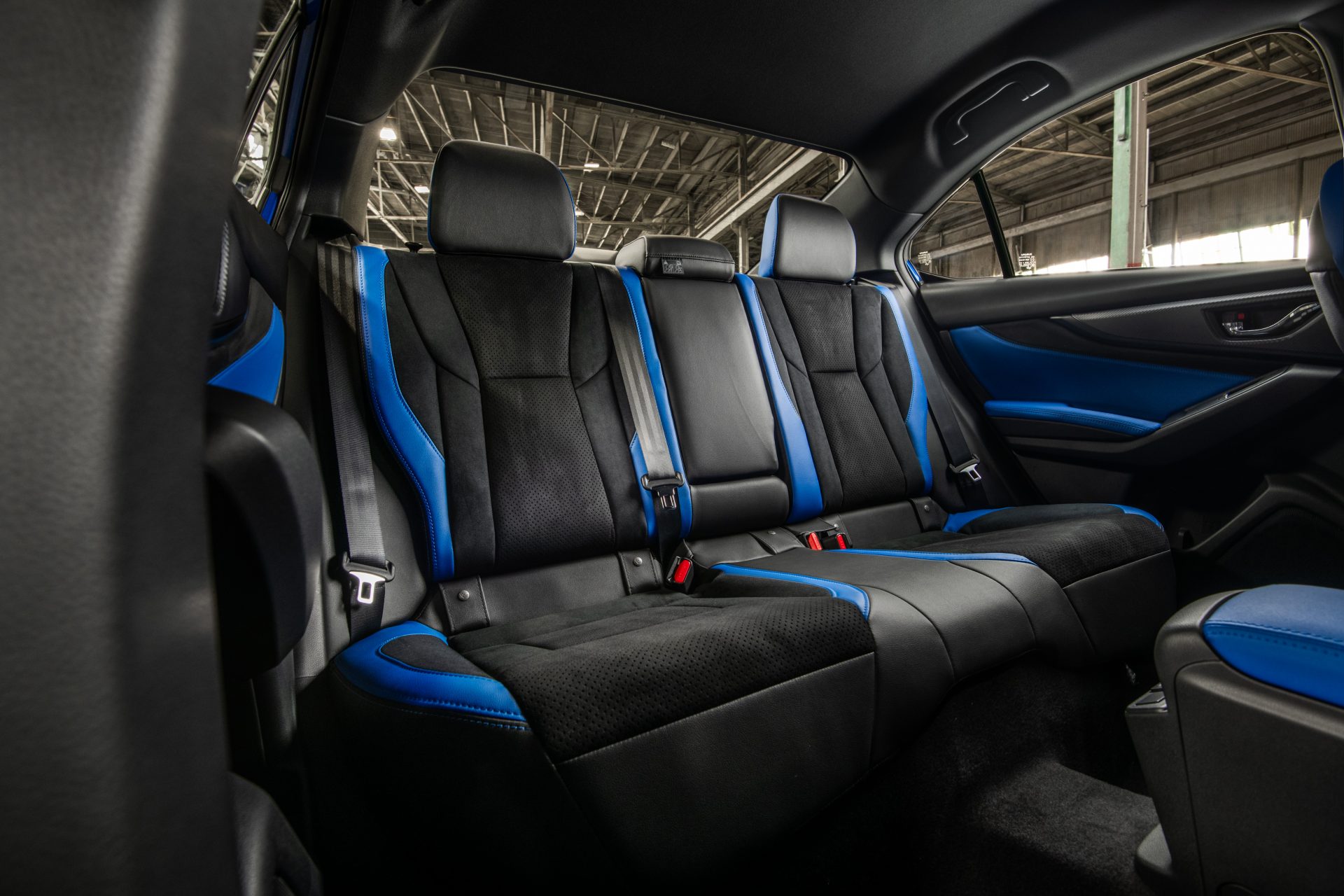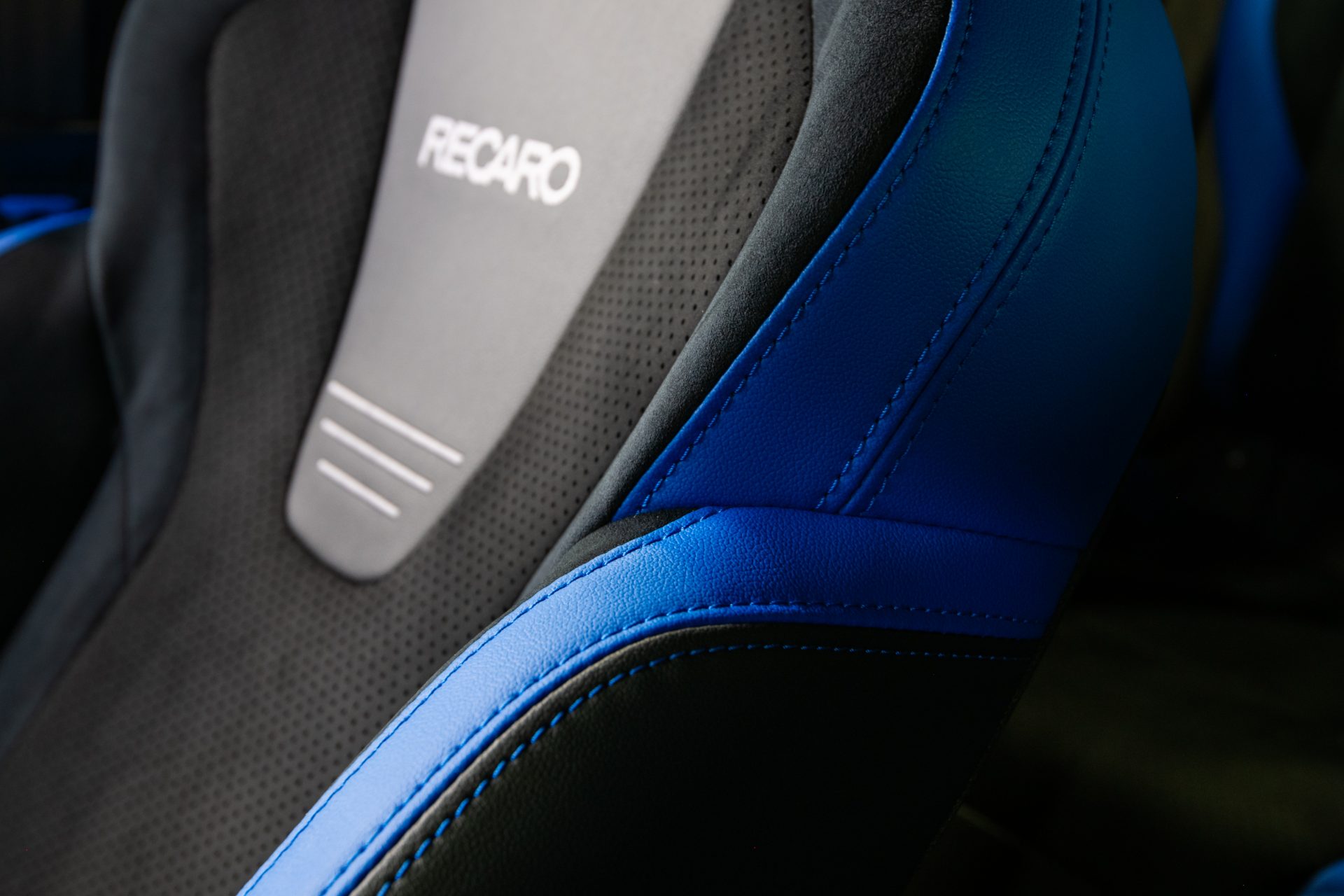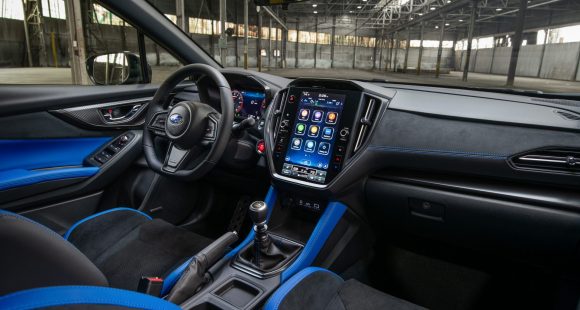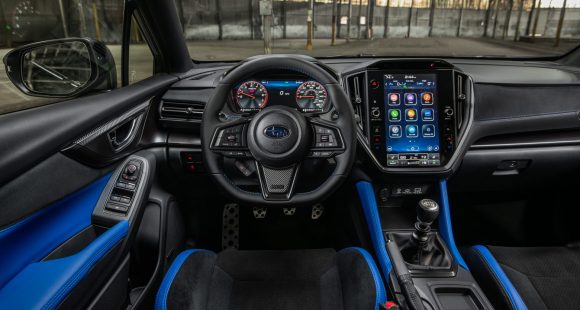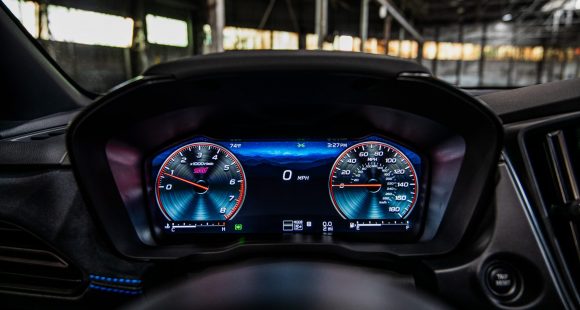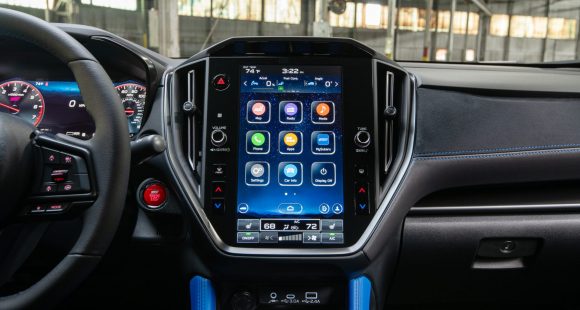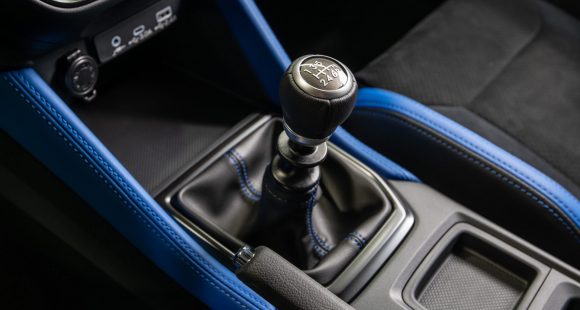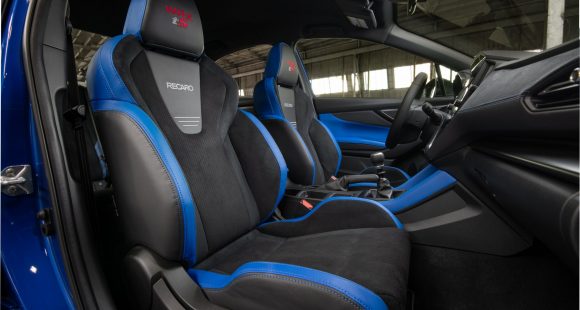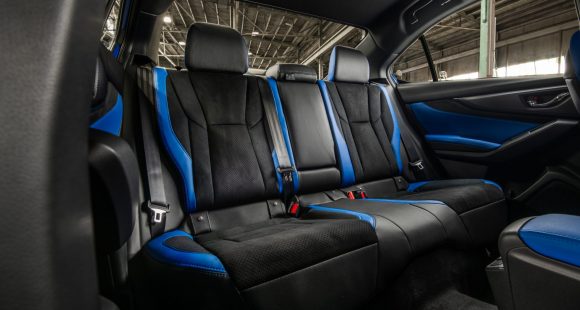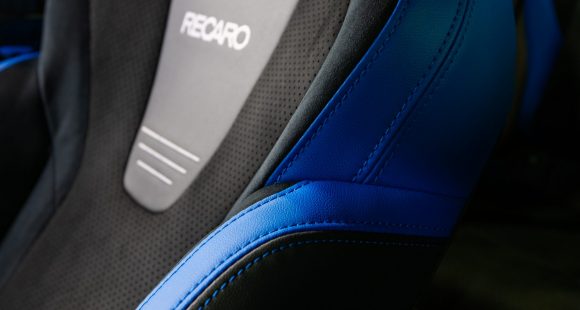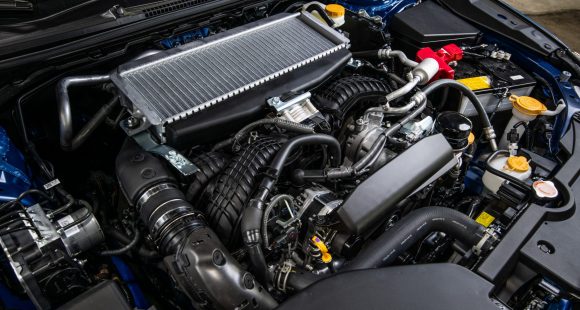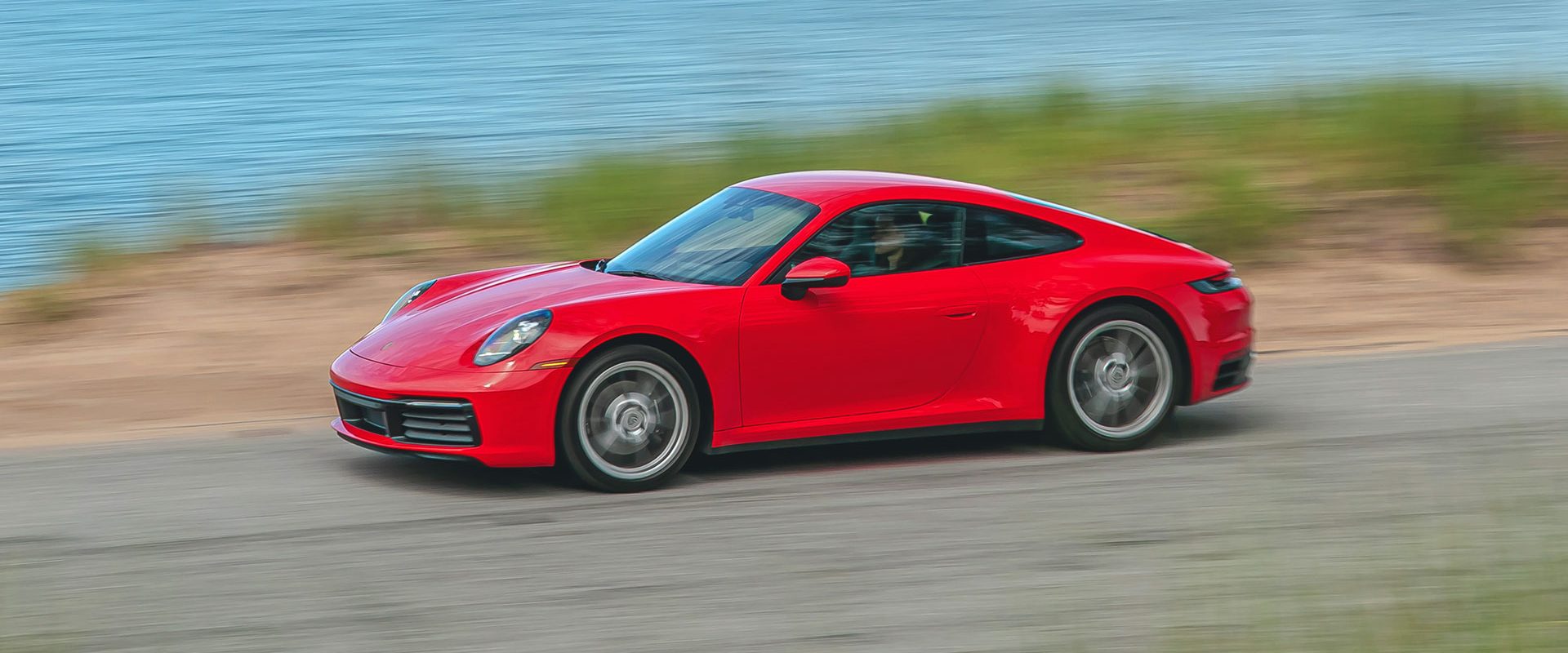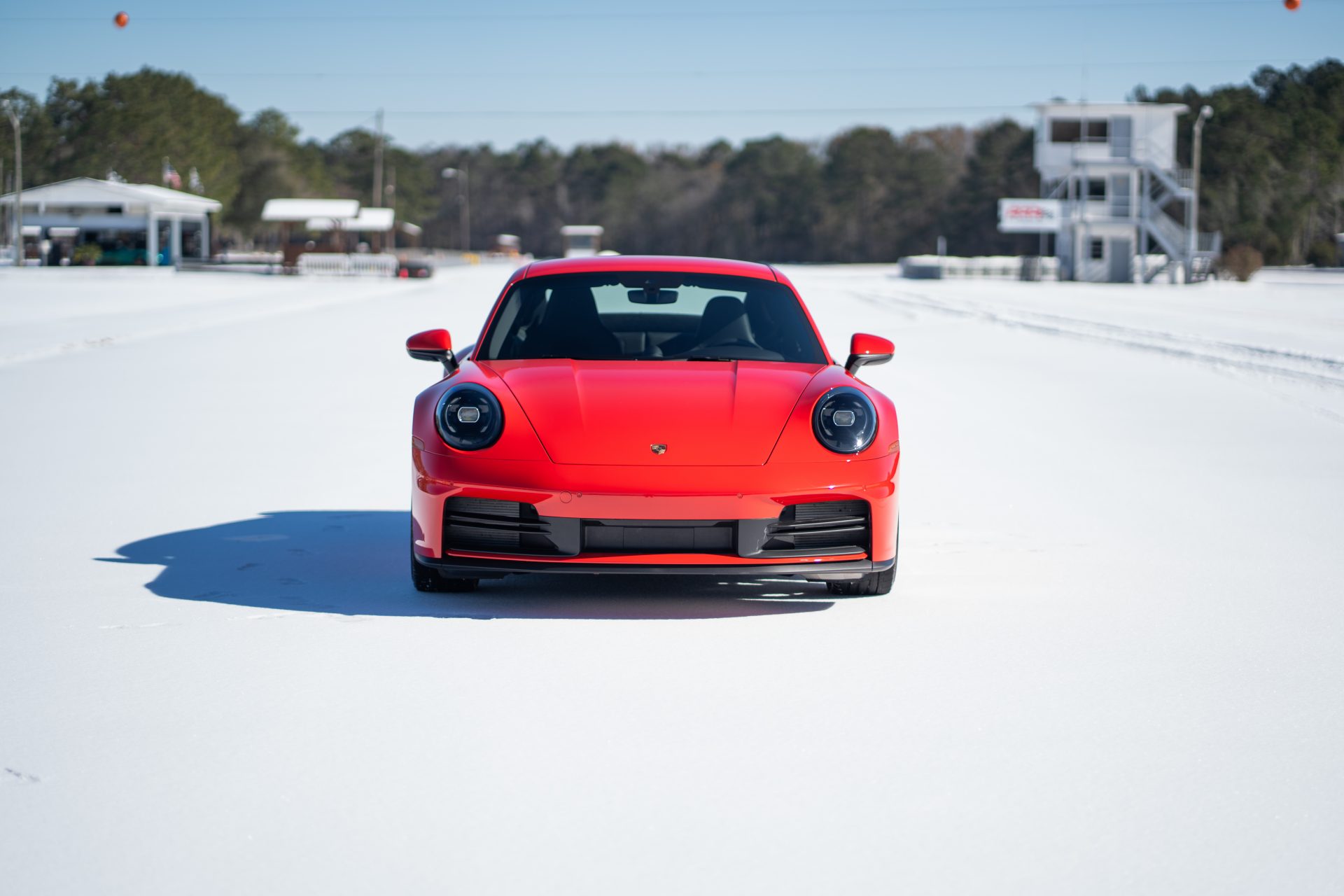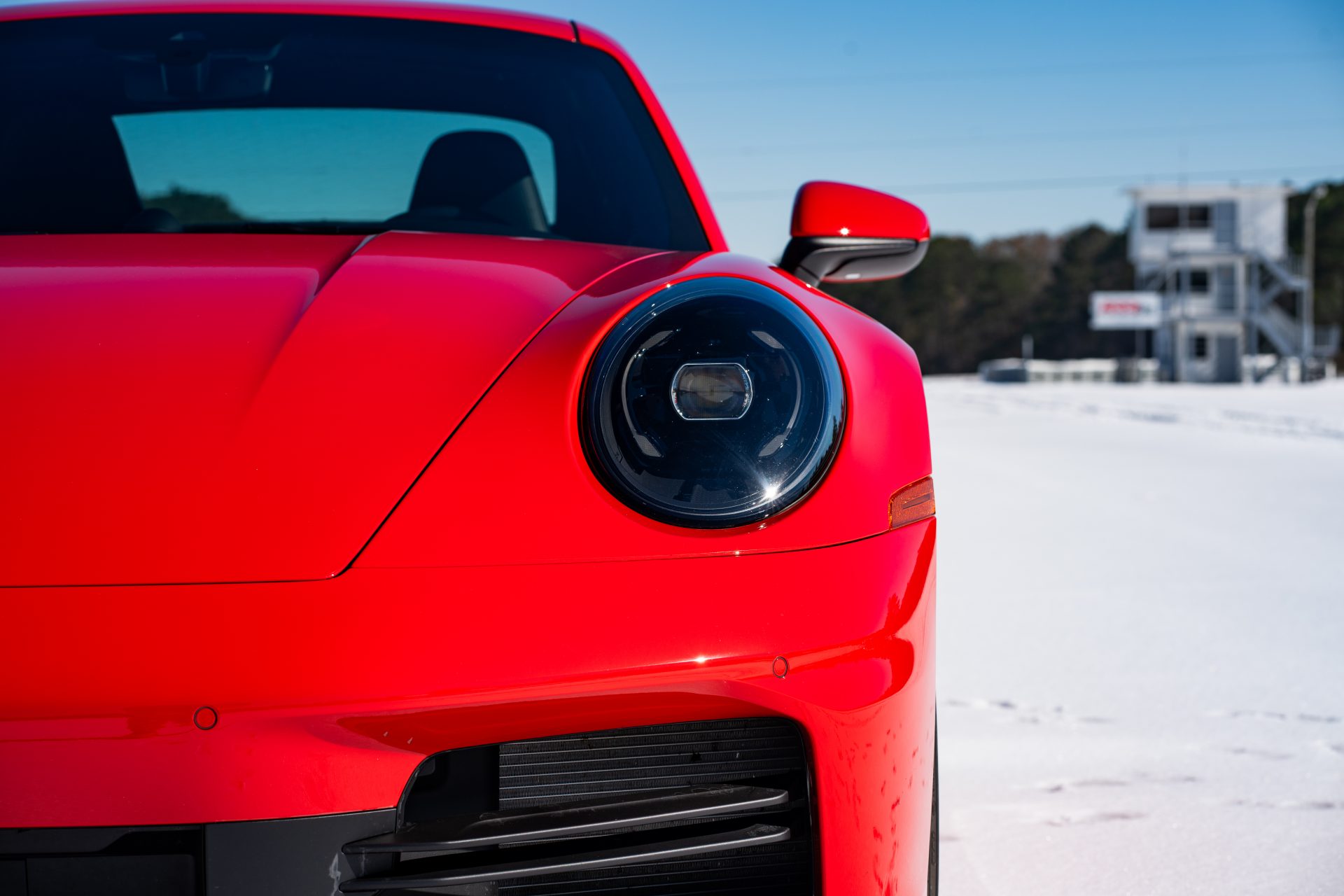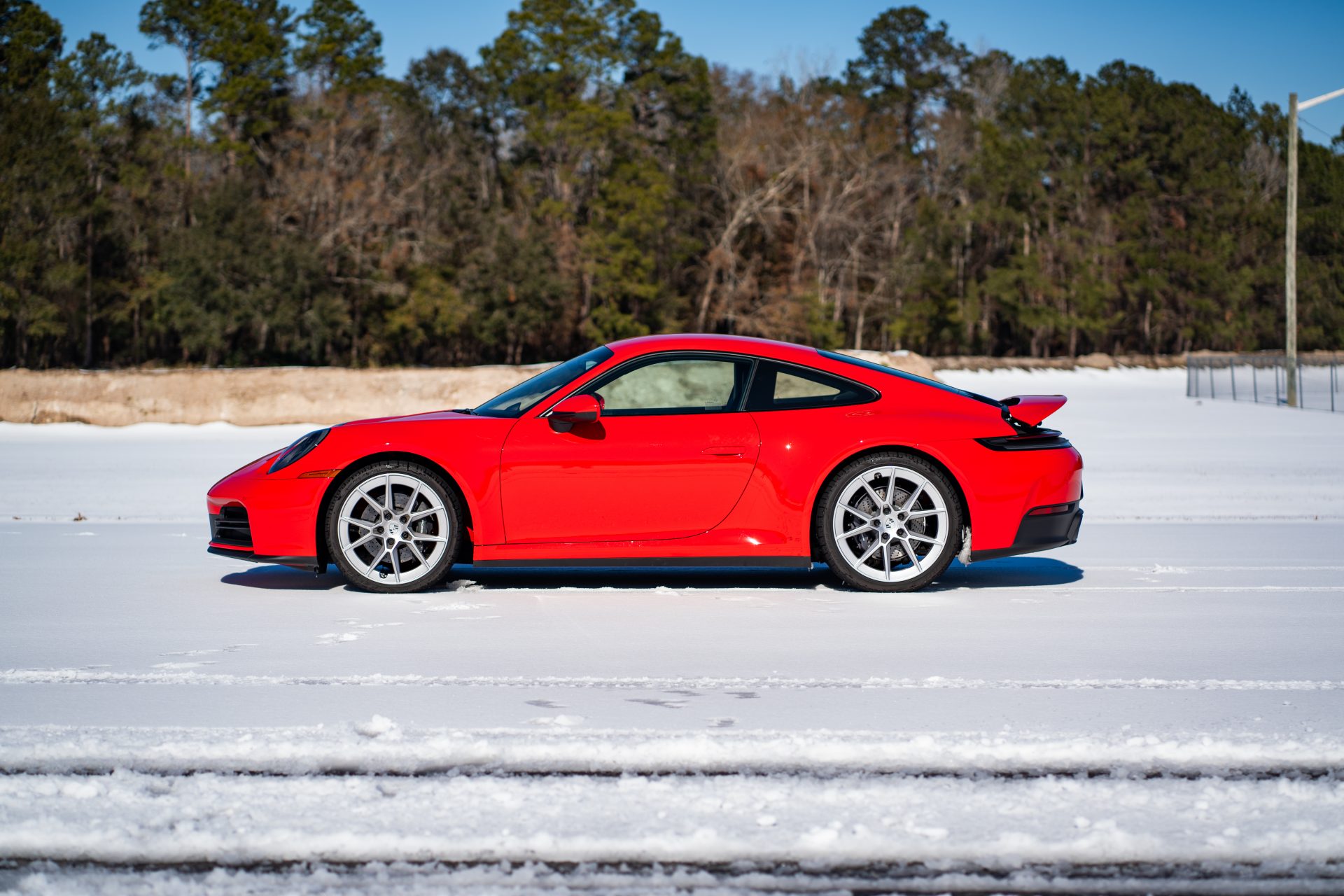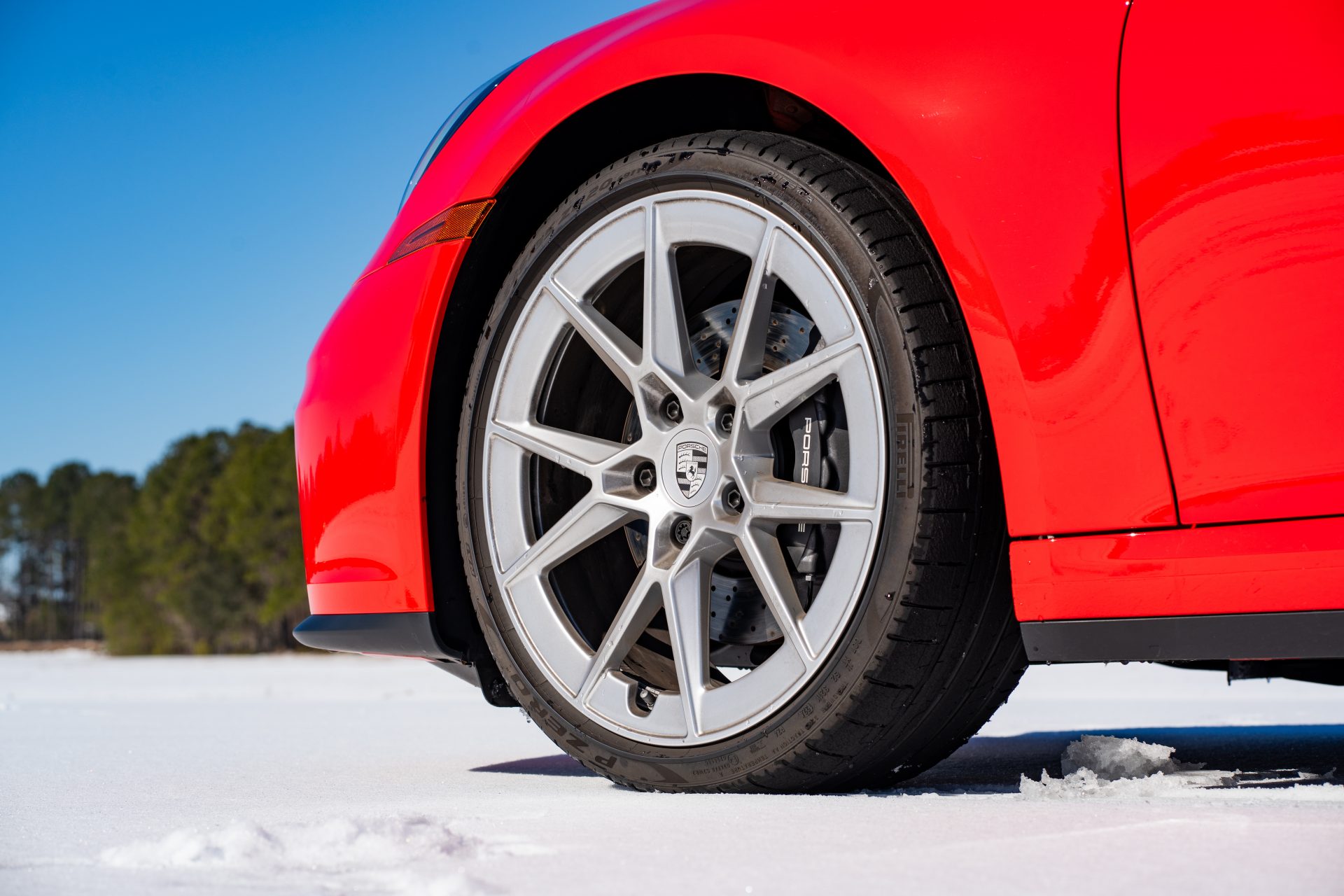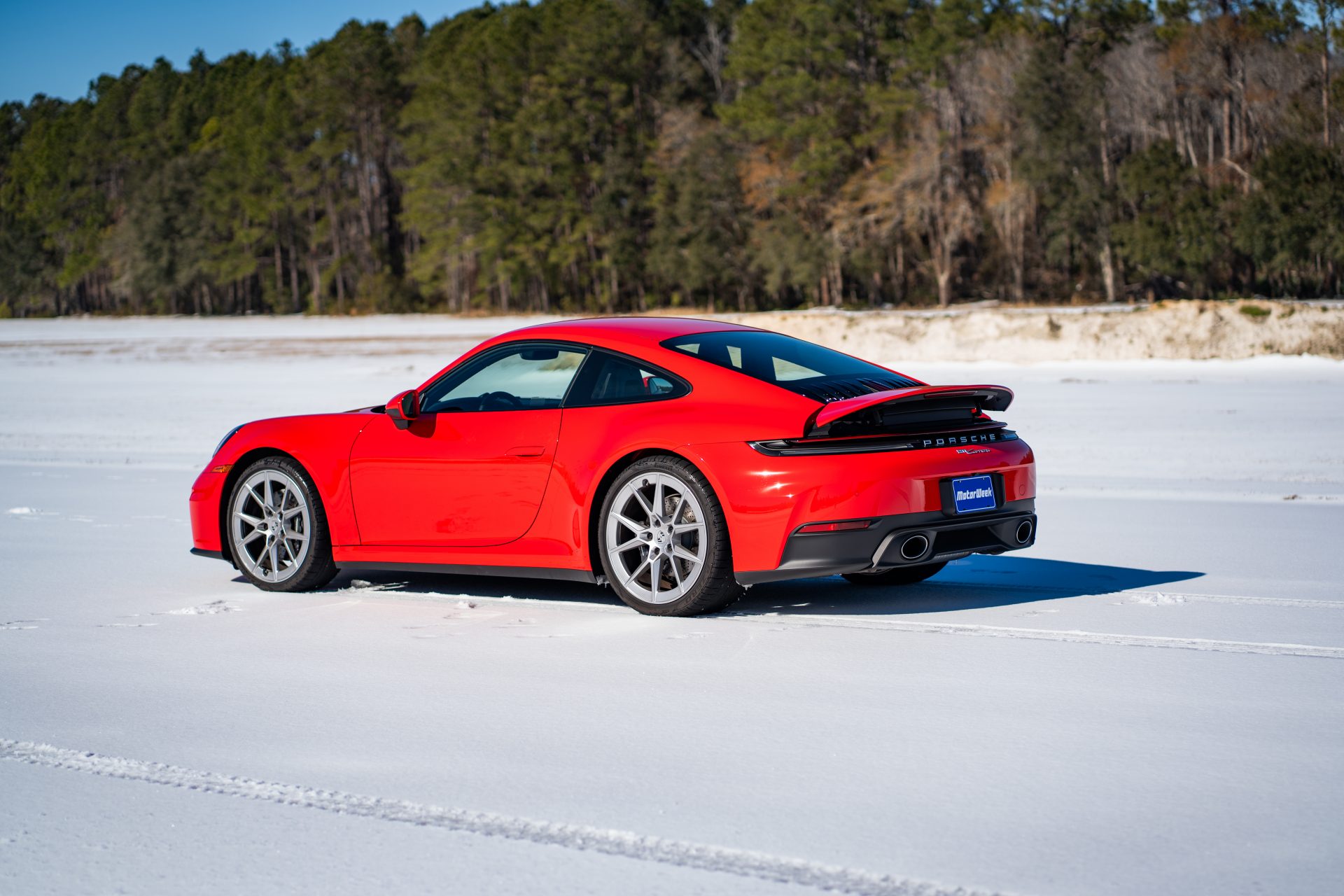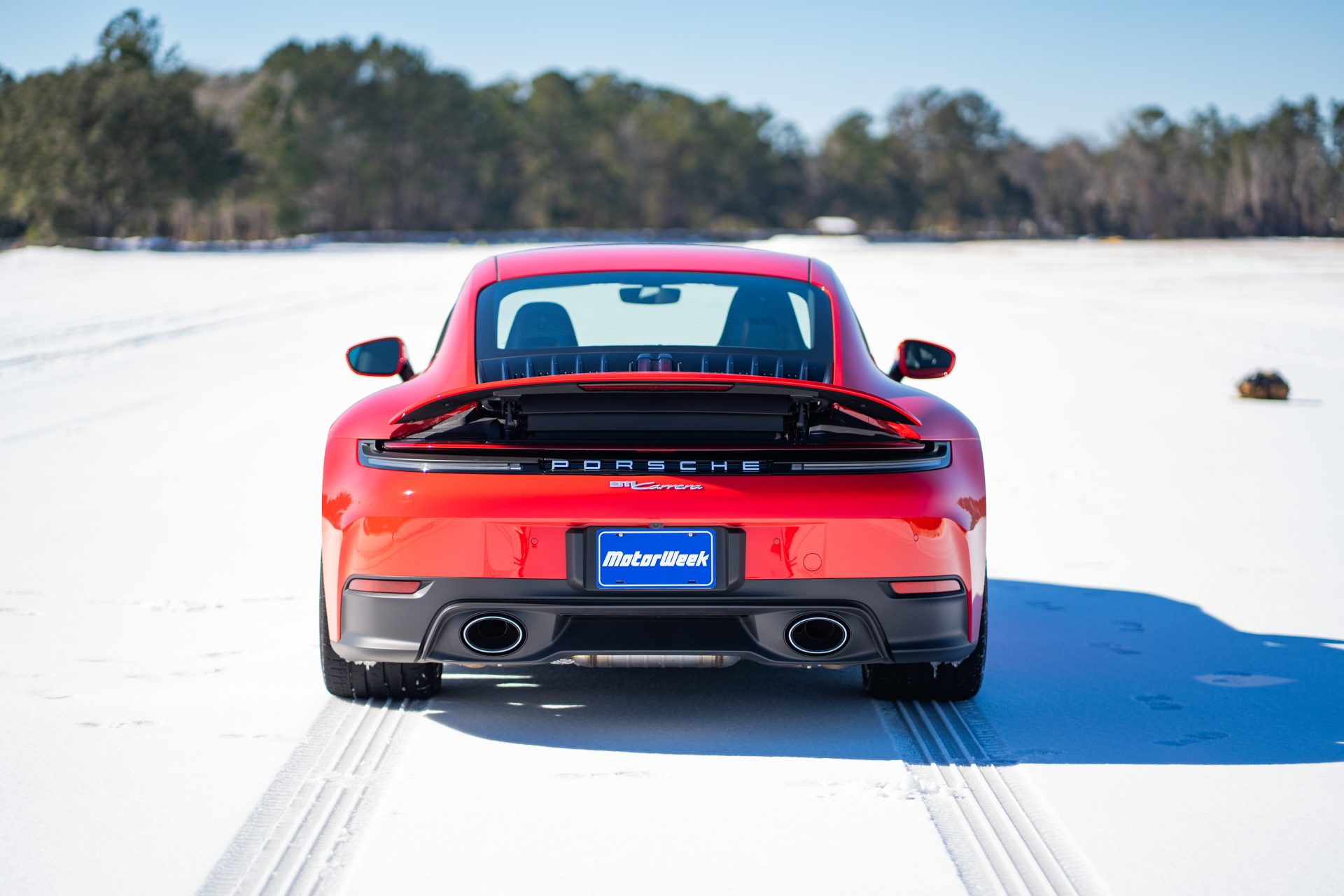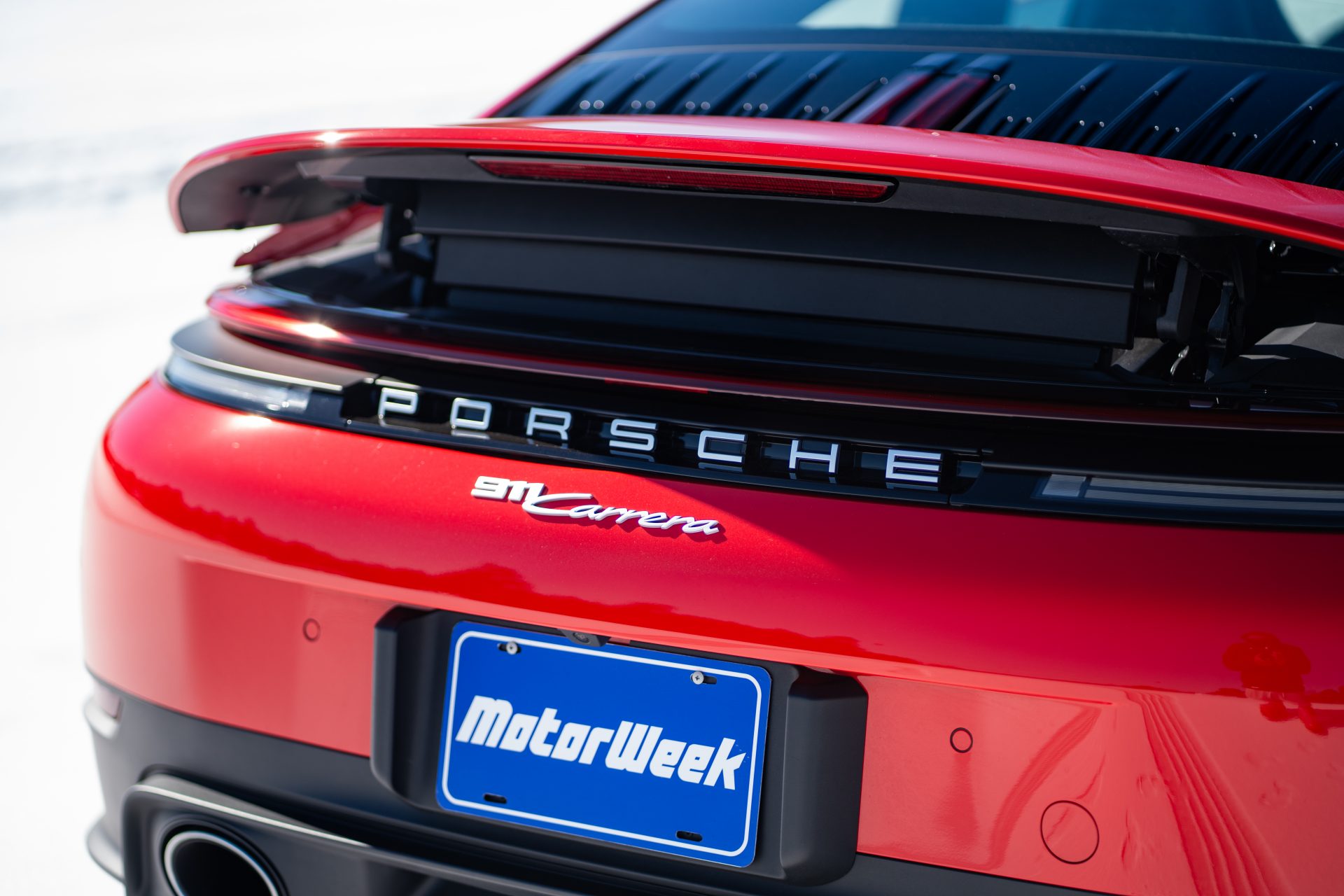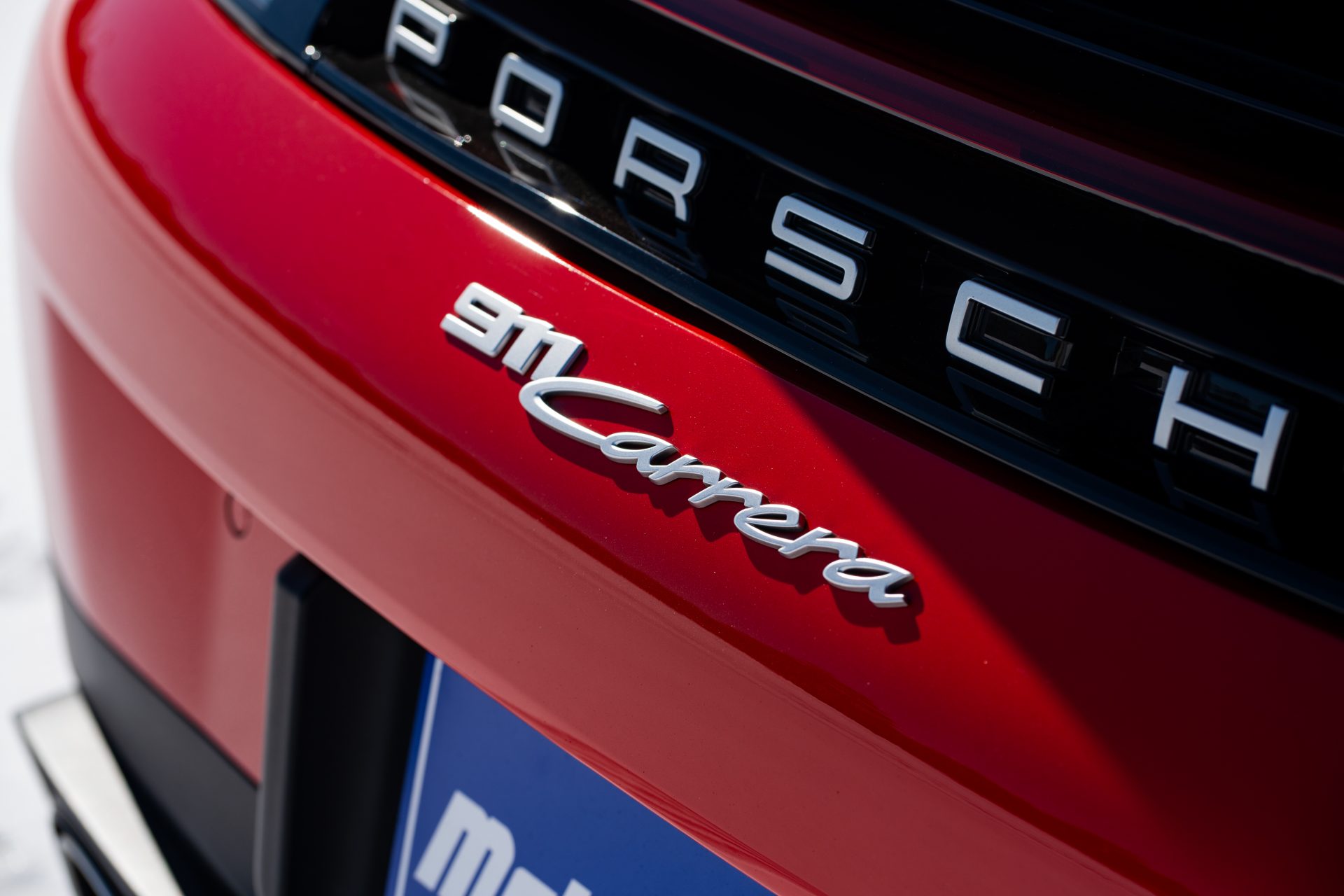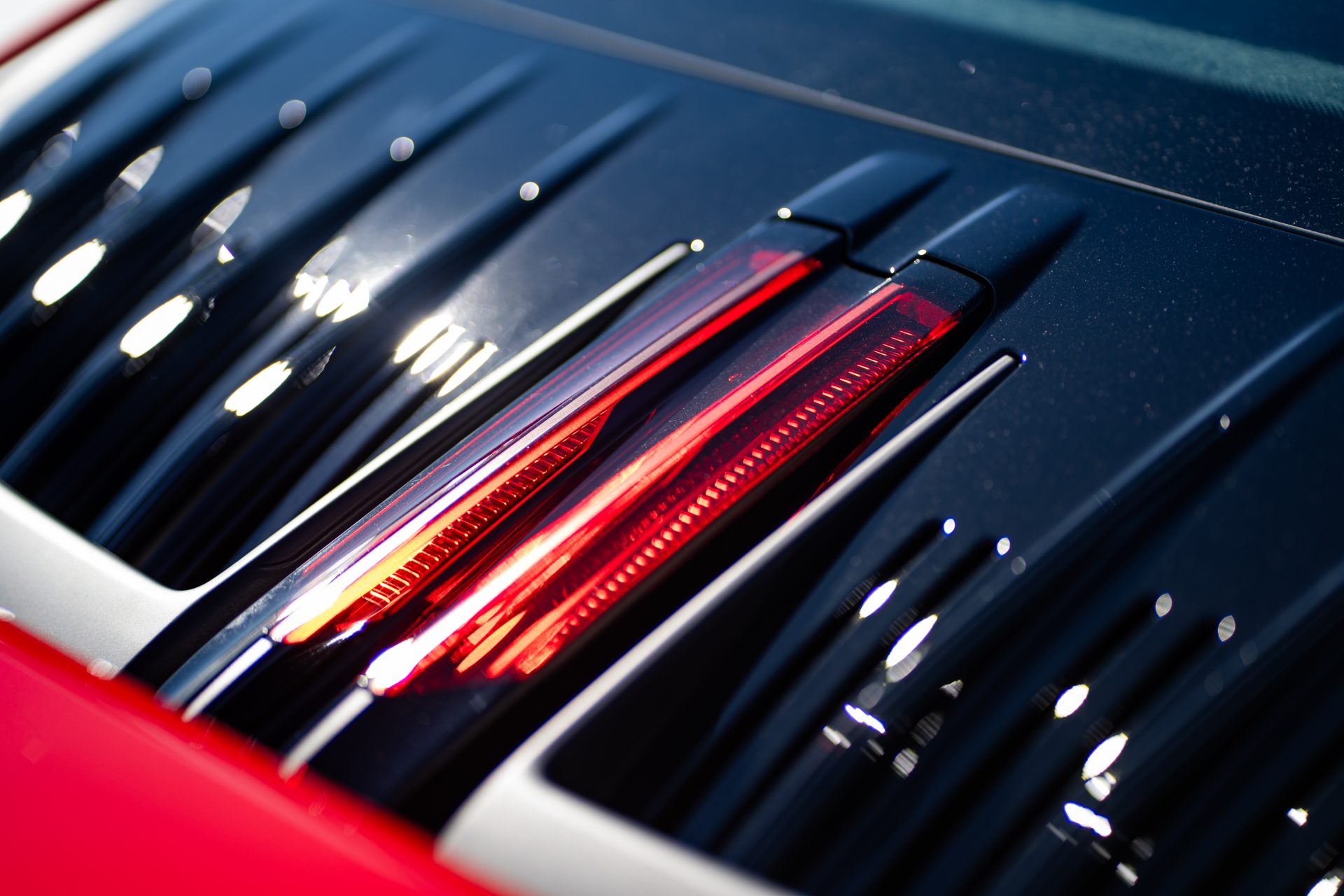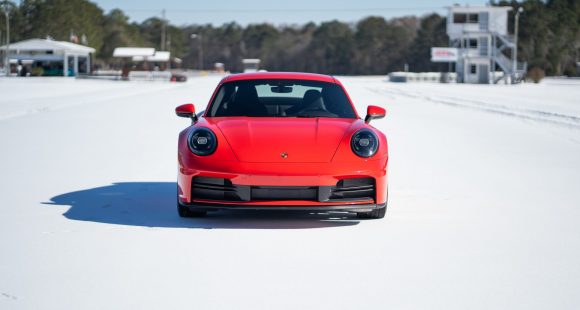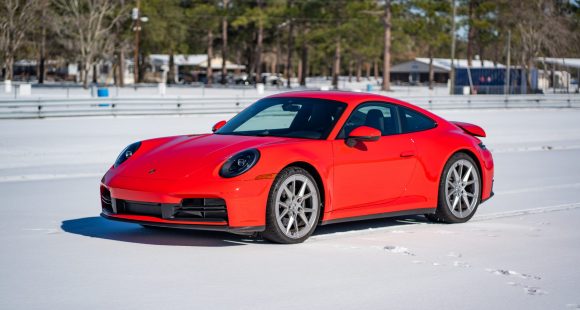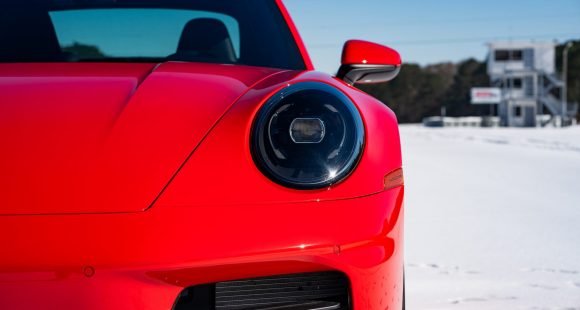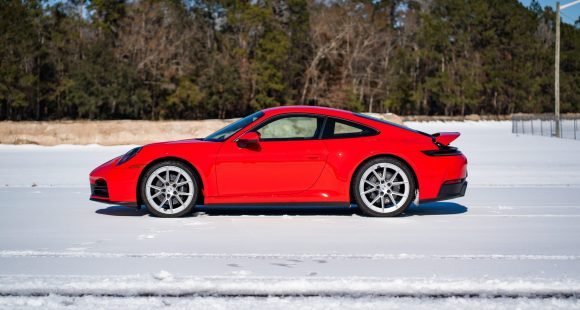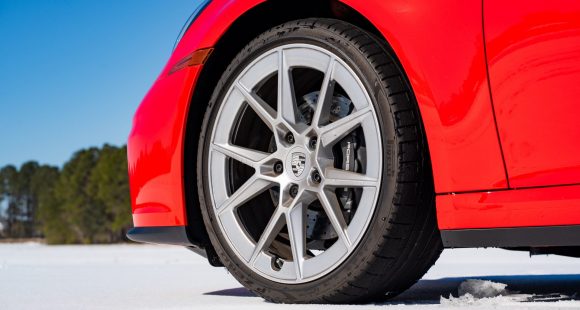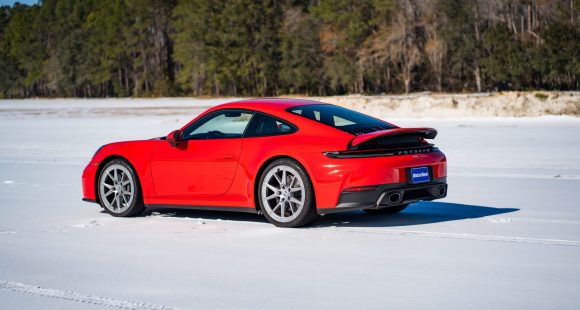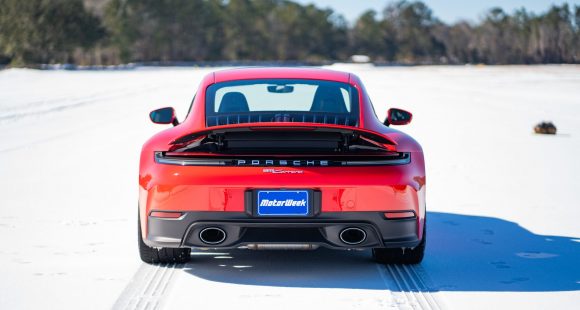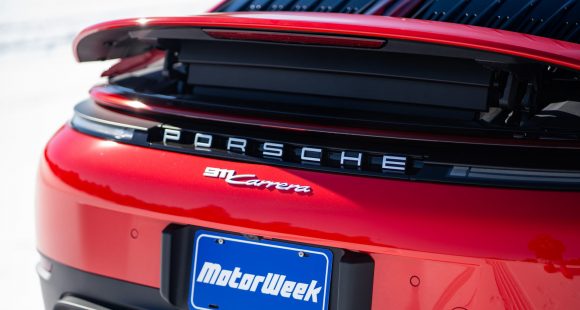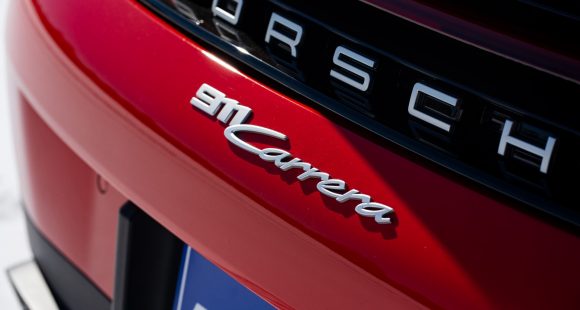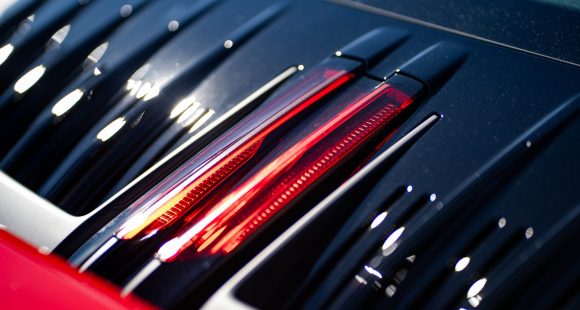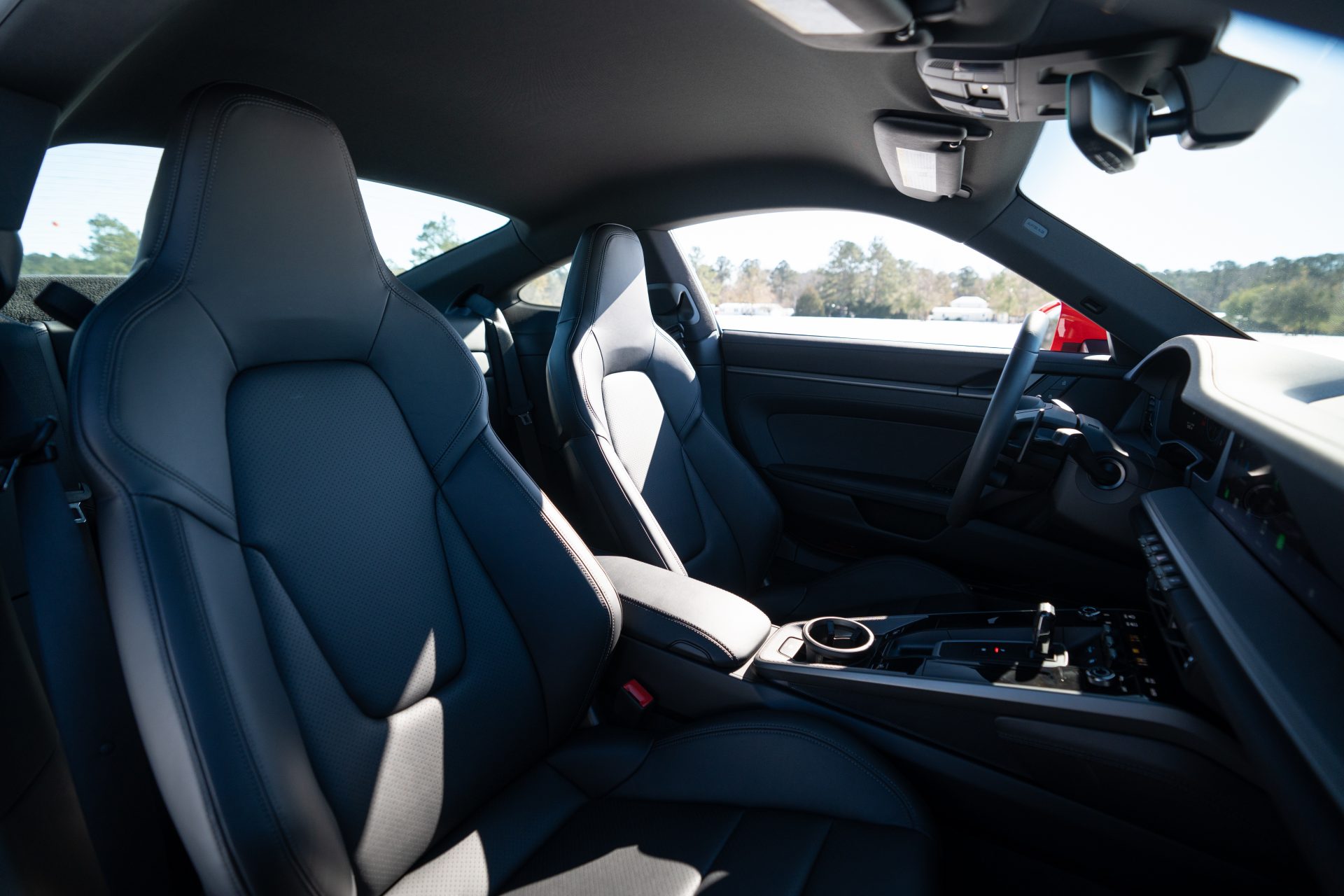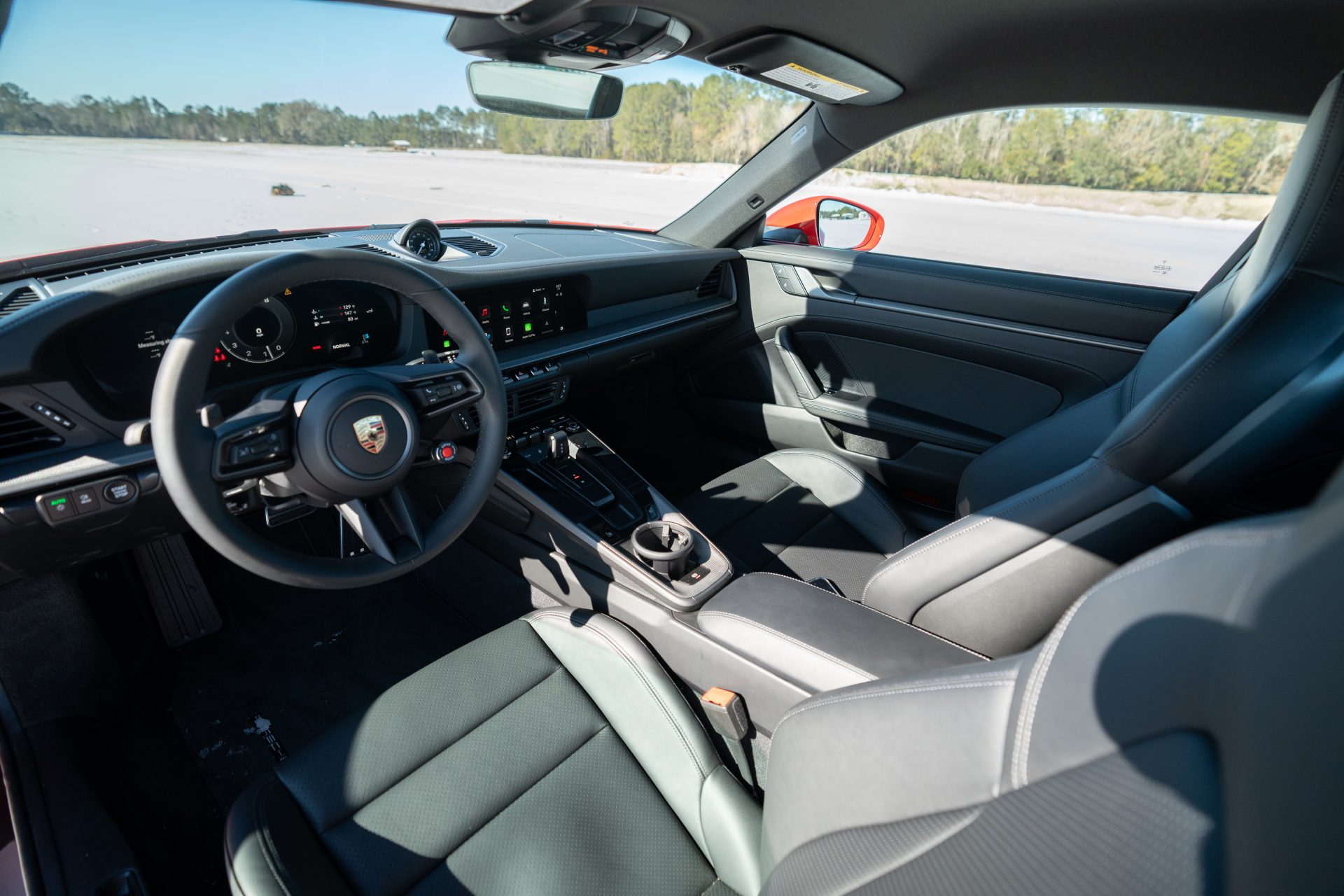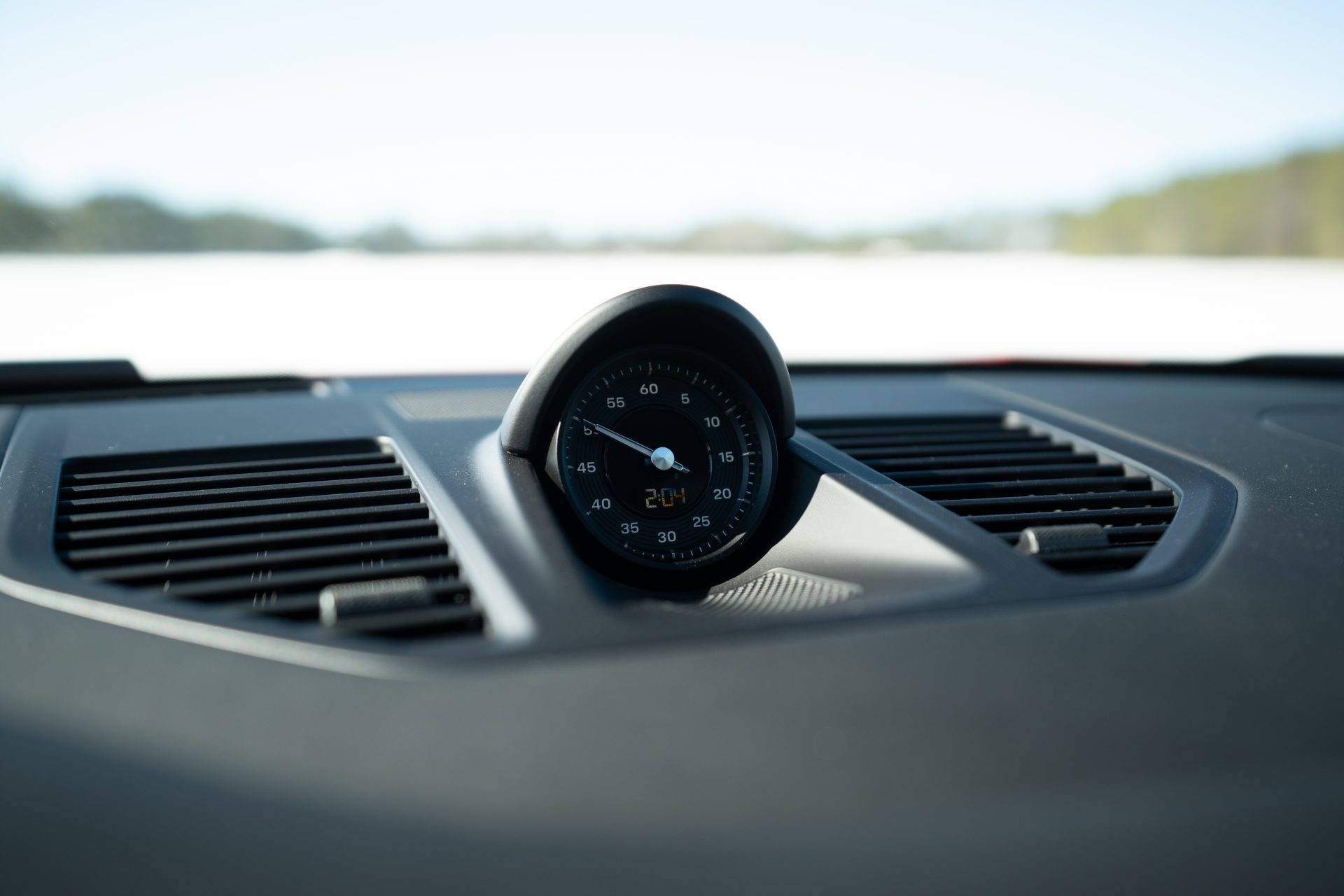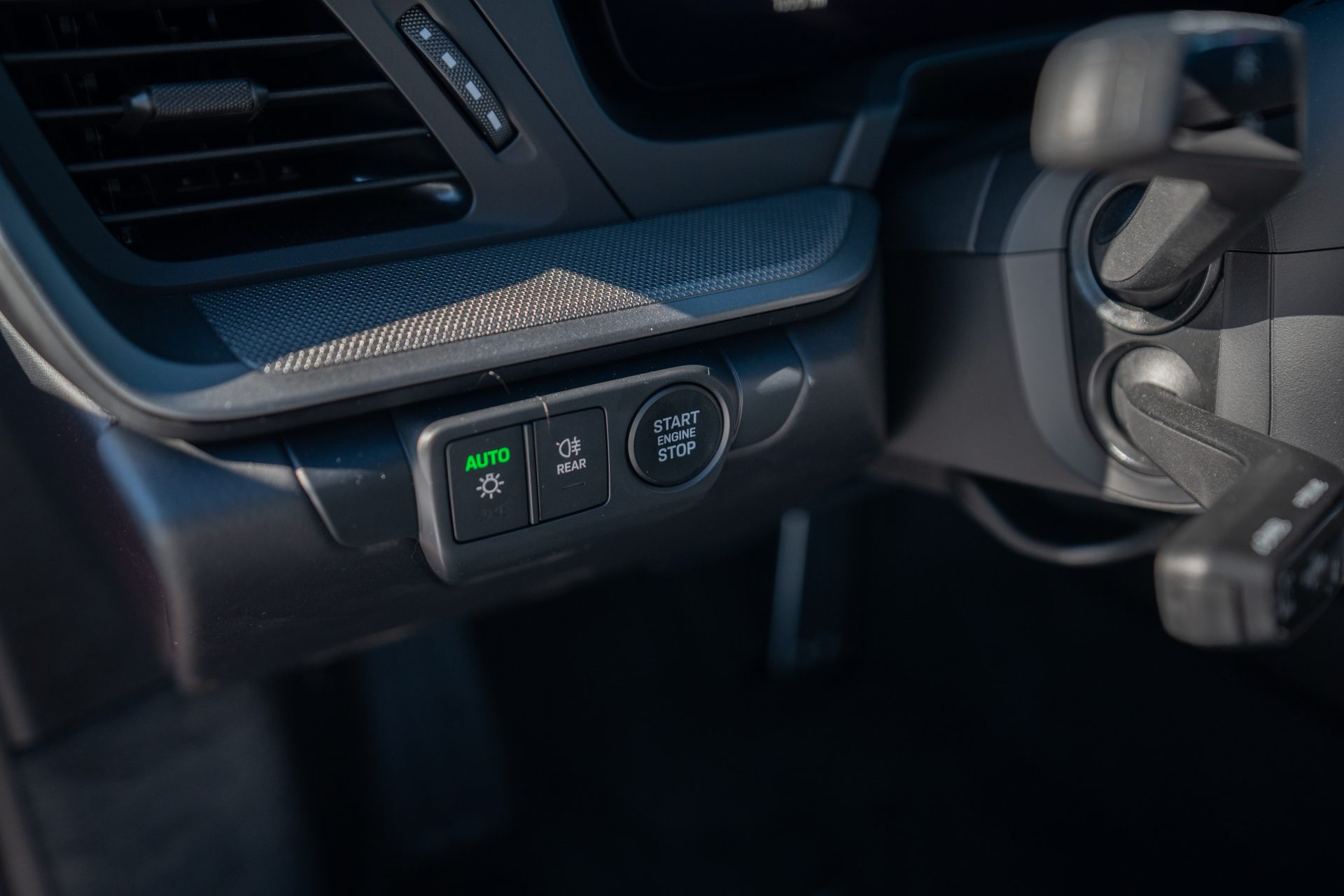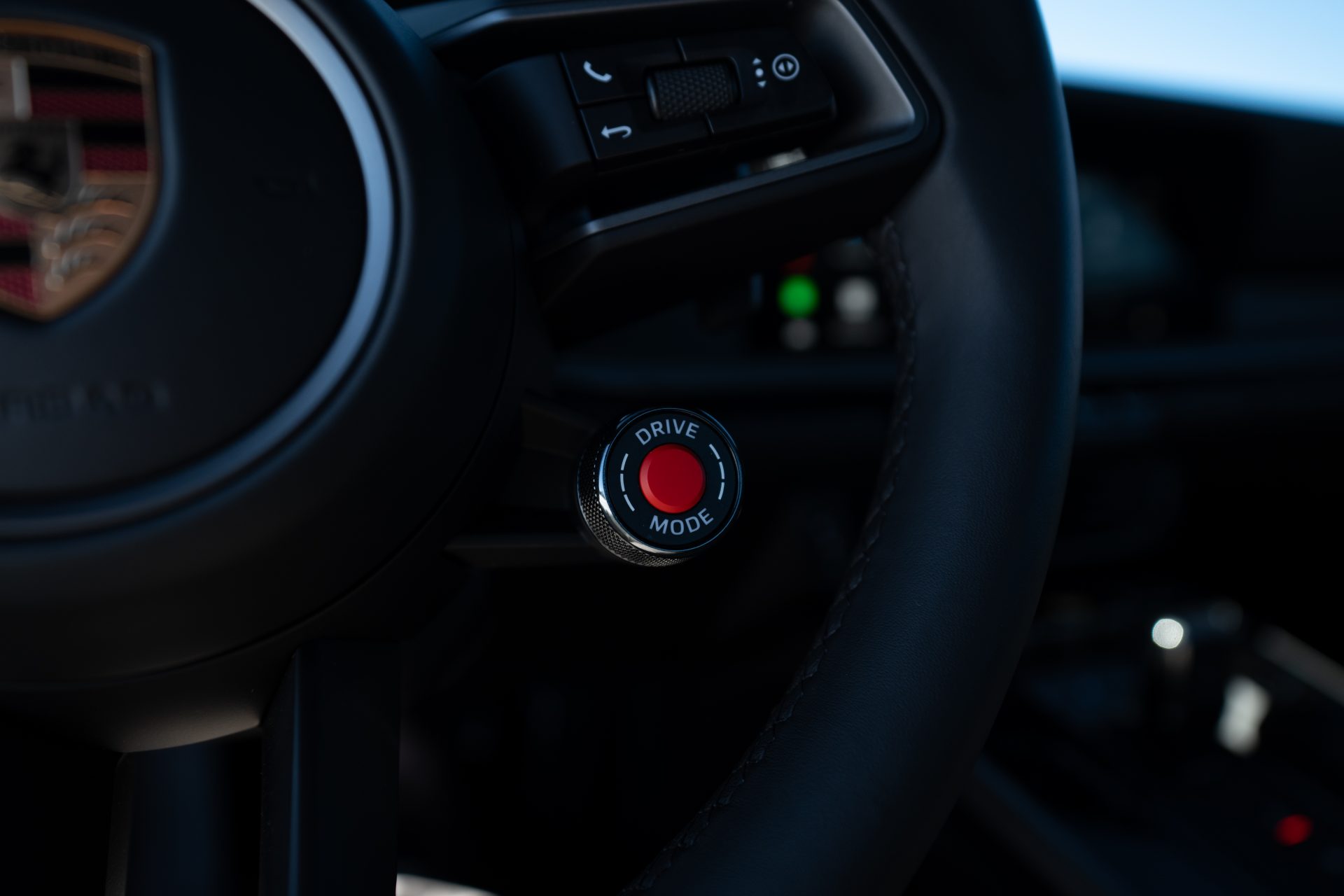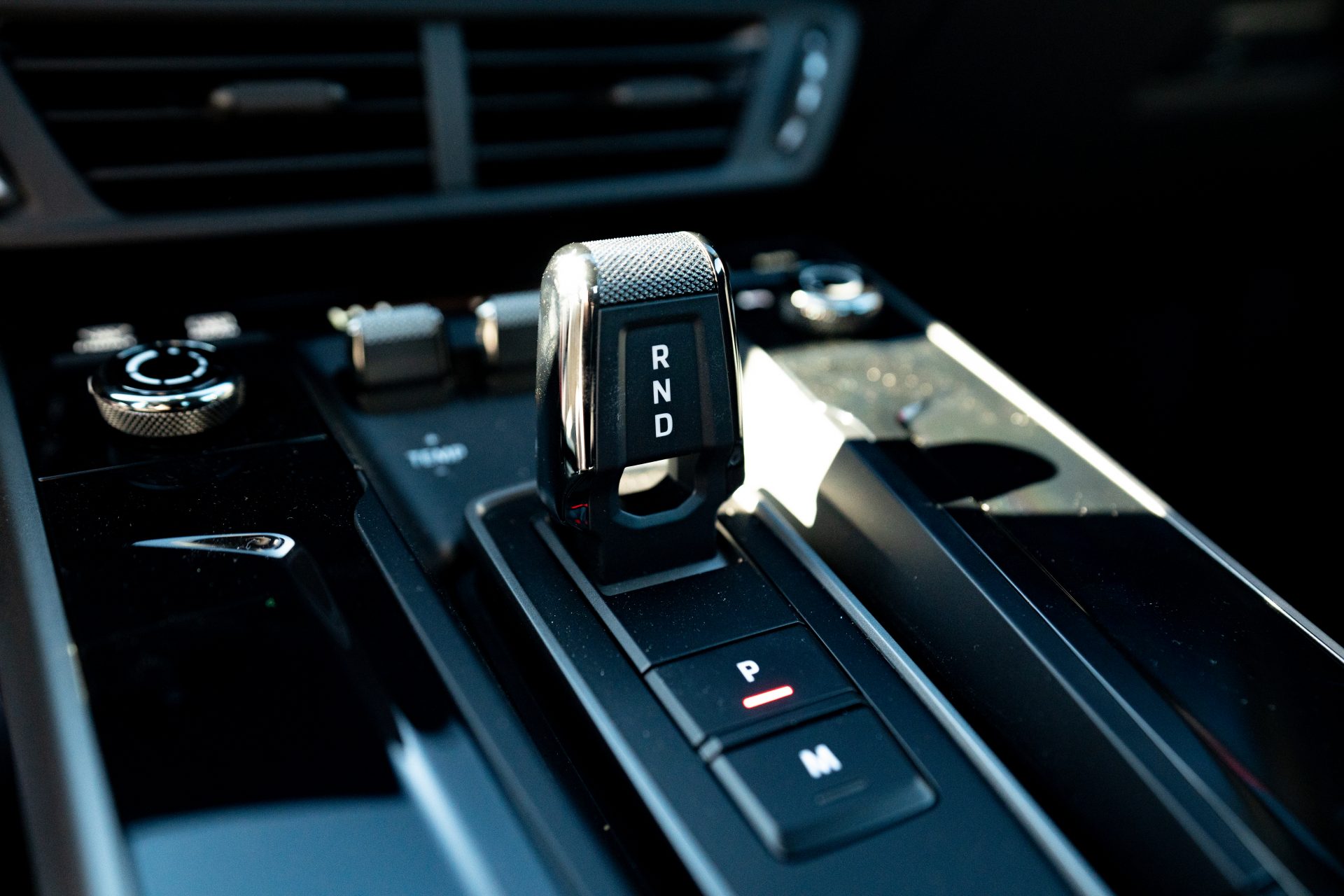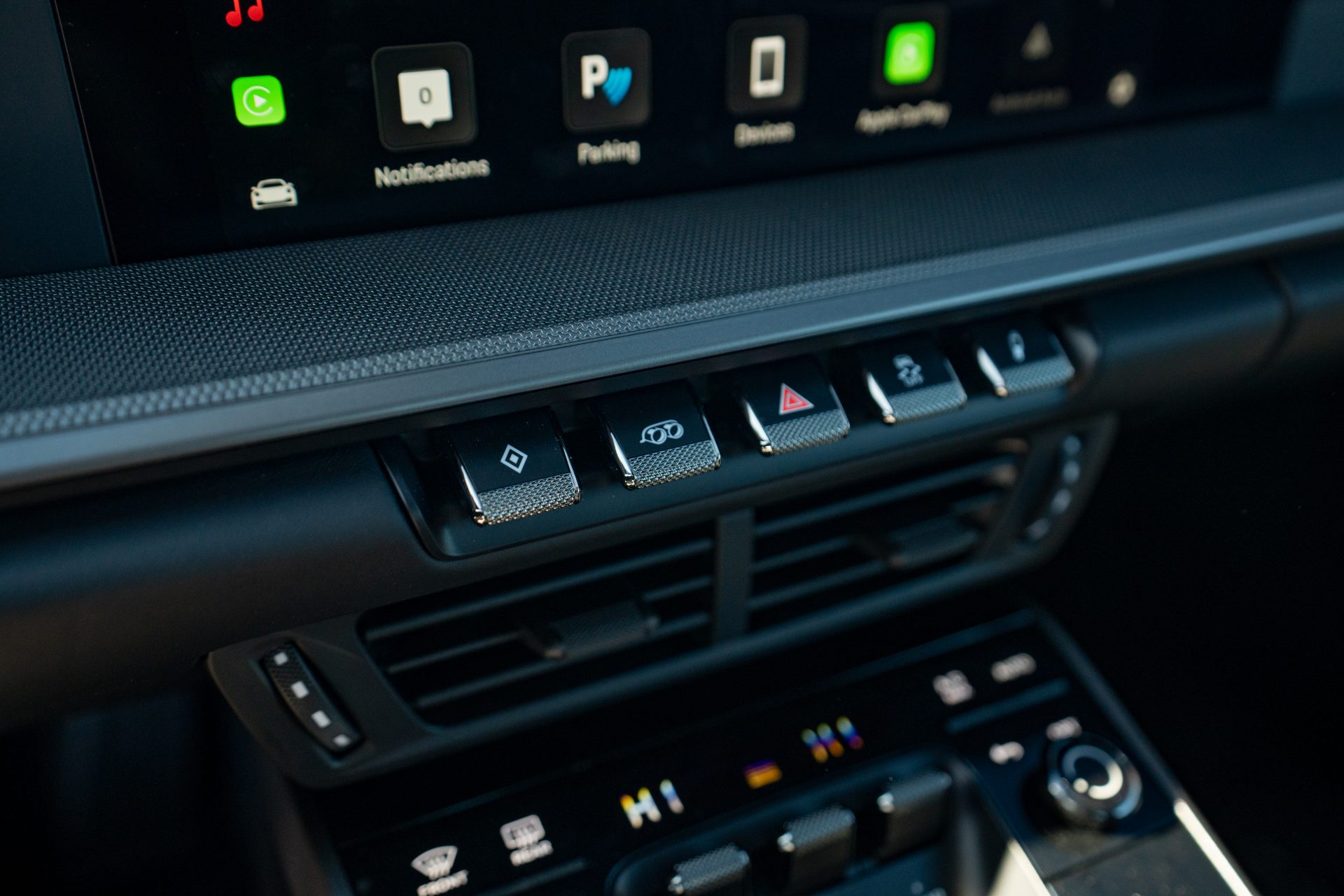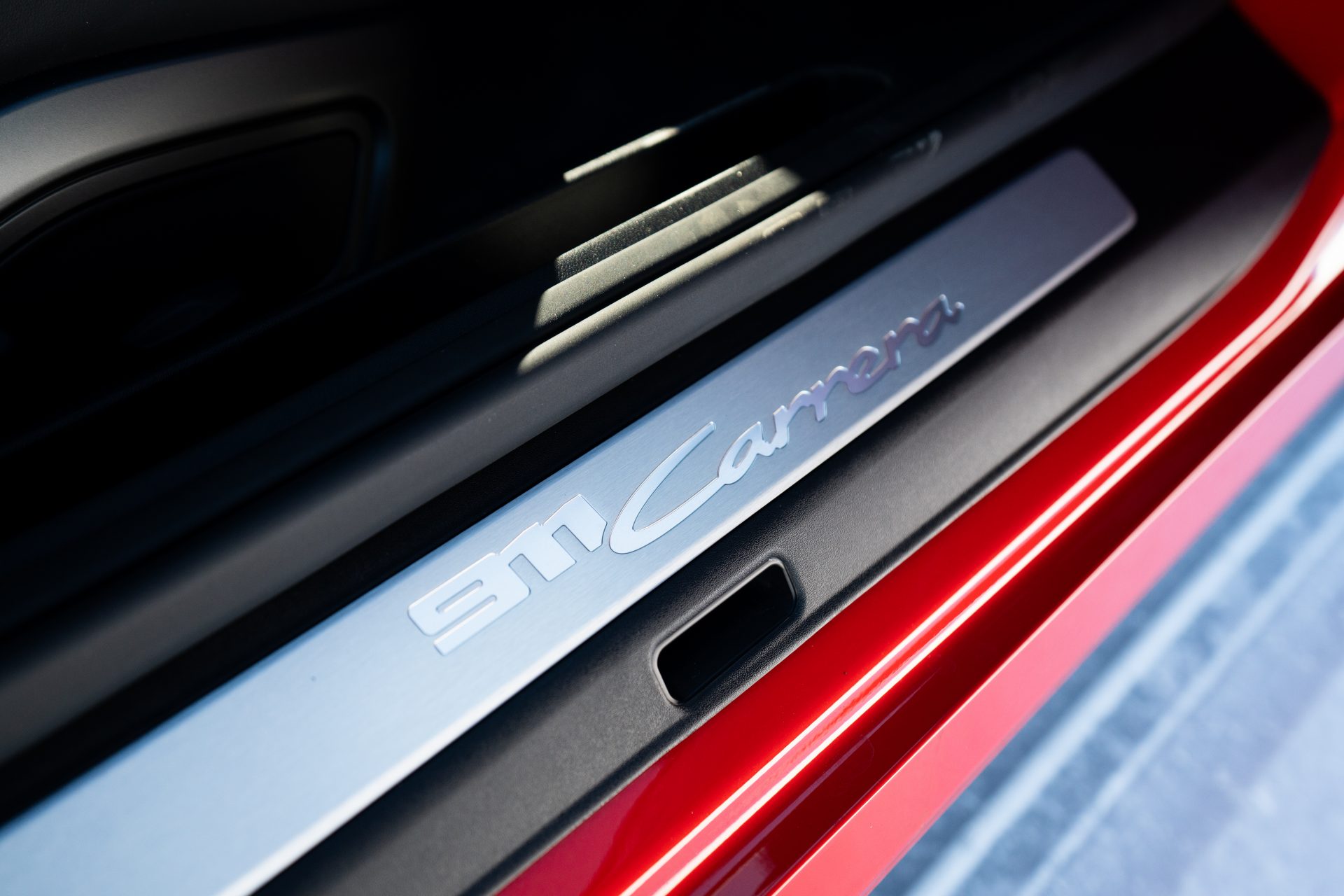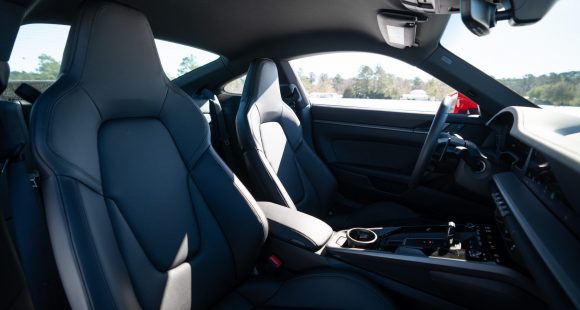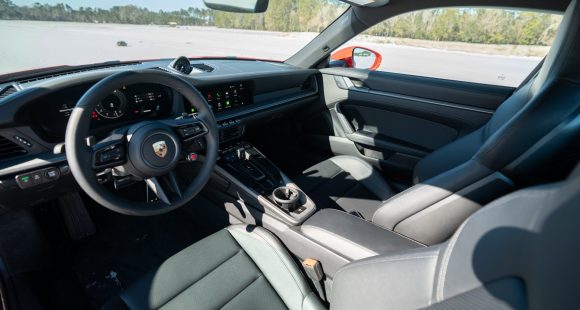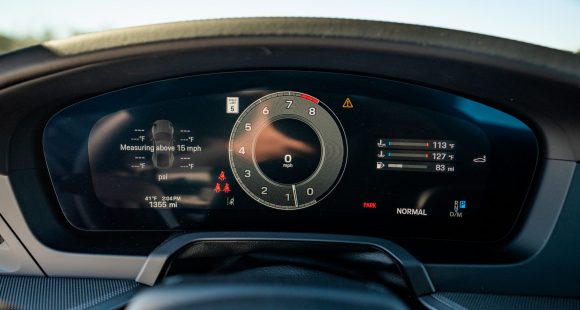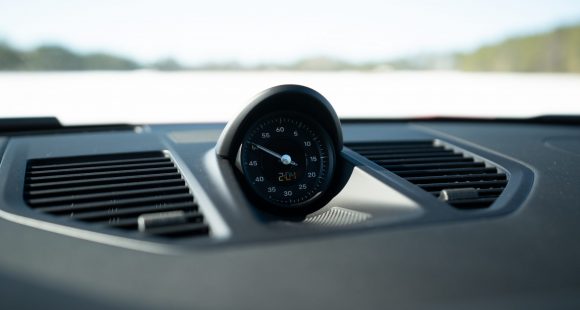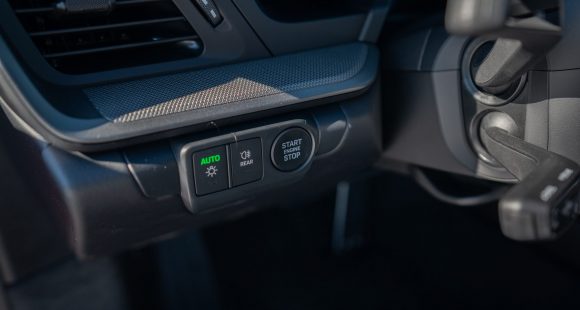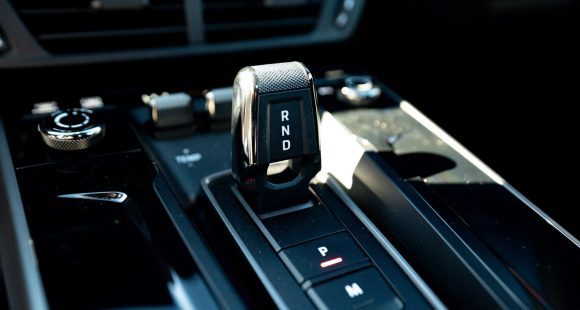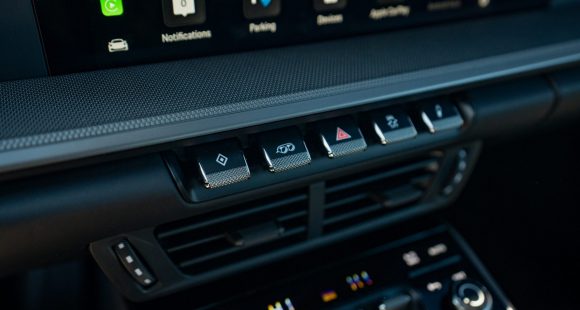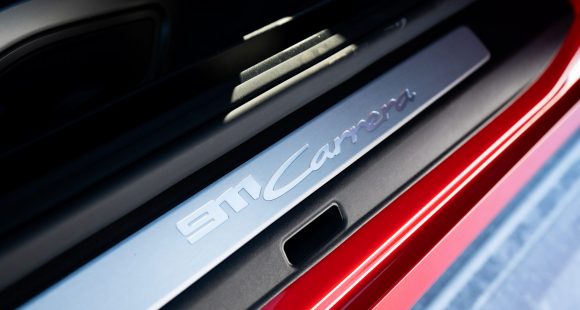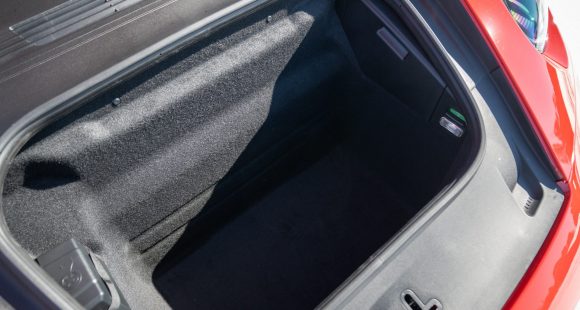2013 SRT Viper
By now you’ve heard that the Viper sports car has been reincarnated; this time wearing SRT badging rather than Dodge. Early reports are that this is a kinder and gentler Viper, to which die hards respond, “Say it isn’t so!” Well has the snake truly been charmed? Well we’ll be the judge of that. And, we here at our favorite road course to find out!
Yes, the 2013 SRT Viper may no longer be a Dodge, but no matter what you call it, the only place to really experience a Viper is at the track, and while we’ve applied rubber to just about every major road course in the country, it’s our annual winter trek to Savannah’s two-mile Roebling Road Raceway that we look forward to the most.
 We’ve driven every previous generation Viper here and they didn’t as much slither through these 9 high speed turns as pulverize them into submission. Well, is this new Viper indeed a kinder and gentler reptile?
We’ve driven every previous generation Viper here and they didn’t as much slither through these 9 high speed turns as pulverize them into submission. Well, is this new Viper indeed a kinder and gentler reptile?
Well, yes and no. It certainly felt a lot more unwavering on our initial laps and it had no problem holding a line. But, it’s not exactly sedate either, there’s still plenty of naughtiness to go around.
It really all depends on what traction control mode you’re operating with… …wait, traction what? Yes, the new Viper has an electronic nanny. I guess it was inevitable. But, you can totally disable it for the true Viper experience. And if you plan on taking in lots of track days, we’d suggest stepping up to the GTS, as it offers additional modes for the Stability Control and a 2-mode suspension system with Bilstein DampTronic Select shock absorbers.
The suspension design is thoroughly revised and lightened with a wider front track and stiffer frame to support it. We immediately noticed a much improved eagerness to turn in; though steering with the throttle is still where the fun’s at! You can further the insanity by opting for the SRT Track Package which shaves weight further and increases grip with race compound Pirelli P Zero Corsa tires on ultra-lightweight wheels, 18’s in the front, 19’s in the rear.
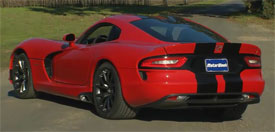 There’s still a nasty amount of power, but it does feel better mannered than before. And there’s still 8.4-liters worth of V10 under the hood, although it’s also gotten lighter as well as stronger. Horsepower is up to 640, with torque coming in at 600 lb-ft. It’s one of our all-time favorite rhythm sections and we’re glad to hear it rocking out once again. Transmission remains Tremec 6-speed manual only, but it likewise is improved, working far more smoothly than before.
There’s still a nasty amount of power, but it does feel better mannered than before. And there’s still 8.4-liters worth of V10 under the hood, although it’s also gotten lighter as well as stronger. Horsepower is up to 640, with torque coming in at 600 lb-ft. It’s one of our all-time favorite rhythm sections and we’re glad to hear it rocking out once again. Transmission remains Tremec 6-speed manual only, but it likewise is improved, working far more smoothly than before.
Combined, they spring the Viper to 60 in just 3.5-seconds! And things have gotten a lot easier off the line thanks to standard Launch Control. Once you get rolling though, it’s down the quarter mile with a smile and a prayer as you struggle for traction on the way to hitting 128 miles-per-hour in 11.5-seconds. The brakes, which didn’t feel that impressive on the street, came alive at the track and showed no signs of fading.
If you spent any time in previous Vipers, unless you were on the track, the experience just wasn’t that pleasant. Jarring is a good word. Well that’s no longer the case. The new Viper is much more enjoyable to drive than before, though never use the word soft. You’ll definitely want to spend more time behind the wheel. So, you may want to keep a lawyer on retainer just in case.
 And realizing that people who want to shell out six figures for a car with a barebones interior are few, Chrysler made the biggest changes of all inside the new Viper’s cabin. There’s more sound-deadening, nicer leather, and a much better audio system. Plus cruise control, available touch screen navigation, and even 14.7 cubic-ft. of cargo space to store your extra testosterone under the rear hatch.
And realizing that people who want to shell out six figures for a car with a barebones interior are few, Chrysler made the biggest changes of all inside the new Viper’s cabin. There’s more sound-deadening, nicer leather, and a much better audio system. Plus cruise control, available touch screen navigation, and even 14.7 cubic-ft. of cargo space to store your extra testosterone under the rear hatch.
Exterior design is a modern version of the original, a little more serious and a little less cartoonish, with every scoop and vent having a real purpose. Here too weight reduction was a goal, thanks to aluminum and even some carbon fiber body panels.
With all of those upgrades, an upgrade in price was expected, but we still think the Viper is well worth its $99,390 price tag. Jump to the GTS for just $23,000 more.
Quite simply, the 2013 SRT Viper delivers, and we want one bad. That’s why it a Drivers’ Choice Dream Machine. Indeed, it’s now refined interior and huge improvement in everyday livability might be just be what it takes to convince your spouse on buying one too. We mean it when we say Best! Viper! Ever!
Specifications
- Engine: 8.4-liters
- Horsepower: 640
- Torque: 600 lb-ft.
- 0-60 mph: 3.5 seconds
- 1/4 mile: 11.5 seconds @ 128 mph
2025 Subaru WRX tS
Subaru’s “World Rally eXperimental” Gets Tecnica-Tuned Tech
Building on its global rally heritage, WRX has been a standalone Subaru nameplate, marketed separately from garden variety Impreza, for two generations now. And while the current WRX still lacks the full STI treatment, this WRX tS serves up some of that high-performance spice we’ve been longing for.
Before we go flat out into our Track Test of this 2025 Subaru WRX tS, lets open the Subaru dictionary so we’re all on the same page. “tS” stands for “tuned by STI;” and “STI” is an acronym for “Subaru Tecnica International,” the brand’s high-performance sub-group best known for upgrading the WRX— oh, that stands for “World Rally eXperimental,” in case you didn’t know.
All that said, STI has been largely dormant for this WRX generation, but this tS sprinkles more of their engineering magic into the mix. No, that doesn’t mean extra power, but does mean significant chassis-related improvements.
First, electronically controlled dampers, adjustable through the 11.6-inch tablet-style infotainment screen. That meant a softer “comfort” mode on the 10+ hour commute to and from Savannah’s Roebling Road Raceway. But once we were there, it was the firmer “Sport+” setting all the way, heightening response from the WRX’s throttle and already quick dual-pinion power steering system. There’s still some body roll for rally-esque weight transfer, but it’s well sorted and provides the “toss-ability” you want in a WRX.
Though if you do autocross your tS, which we implore you to do, you might feel the six-piston front, two-piston rear Brembo brakes first. The bite is strong, giving good rotation in the corners and plenty of “halt” for this 3,400 lb. compact with minimal fade, keeping us on track all week…until some unfortunate winter weather passed overhead. No worries here, as Subaru’s Symmetrical All-Wheel-Drive system got us to the track for some powdered deserts: Frosted donuts served up Michelin style, a set of winter tires different from the grippy Bridgestone Potenza S007 rubber the tS typically rides on. Some prior hot laps of California’s Sonoma Raceway gave credence to those Bridgestones, and showed us what this hot-compact can do in ideal conditions.
It’s well sorted and provides the “toss-ability” you want in a WRX.
Other tS enhancements are cabin-based, namely these beautiful blue Recaros. Most of our staff appreciated their moderately-aggressive bolstering on both street and track. And they’re even heated, too. Another tS-only appointment is this 12.3-inch digital gauge display. It mimics the standard analog gauges with some additional info, but can switch to a navigation mode for more convenient route guidance.
We do wish our tS came in the new Galaxy Purple or the trademark World Rally Blue, but this Crystal White paint wasn’t too shabby, contrasting its Cherry Blossom Red badging and blacked-out lip spoiler. Otherwise, the tS is like any other WRX, down to the hood scoop funneling air to the top-mounted intercooler.
Underneath is the same turbocharged 2.4-liter flat-four in all other trims, boxing at 271 horsepower and 258 lb-ft of torque. The freak winter weather stopped straight-line testing, but a 0-60 time estimate of 5.5 seconds is about as spry as you realistically need, pulling strong through most of the tach; though the 6,000 RPM redline required attentive shifting of the six-speed box, which the tS comes exclusively with. The throws are precise, if a little long, and the clutch is wonderfully weighted.
With discontinuation of the Base trim, pricing for the WRX now starts with Premium at $36,920. The tS is at the top of the lineup with the automatic-only GT, both starting at $46,875. All WRXs continue to be made in Gunma, Japan.
If you’re an enthusiast itching to do the tuning yourself, perhaps the 2025 Subaru WRX tS is not for you. But if you want a plug-and-play experience, this is it. While it won’t exactly bestow the loose-cannon, top-level driving skills exhibited by famous WRC drivers upon you, the tS moves this WRX’s game in a direction we’ve so desperately wanted Subaru to take.
Specifications
As Tested
- Engine: 2.4-liter flat-four
- Tranmission: 6-speed manual
- Horsepower: 271
- Torque: 258 lb-ft
2025 Porsche 911 Carrera
Ever Evolving 911 Reaches New Heights
The Porsche 911 has existed for 60 years now! Amazing! And, you could argue that major changes over all those years have been relatively few, as constant incremental improvement is more the way that Porsche does business. With that in mind, let’s hit the track in the latest 911 and see what constant improvement means for 2025.
We’ve driven so many 911s here at MotorWeek, each seemingly more special than the last, so it’s a bit refreshing to be ripping around Savannah’s Roebling Road Raceway in a 2025 Porsche 911 that’s about as close as you can get to base these days. And the fact that it’s just as fun as all those exclusive pieces says a lot about how far the 911 has come. Perhaps it also speaks to how much a base 911 will set you back today as well; more on that later.
For now, we’re just thinking about the next apex, holding steady throttle as we approach, and getting on it way sooner than you’d expect without upsetting anything, as the 911 rockets off the corner thanks to tremendous grip and a PDK trans that finds the perfect gear before we even gave it a thought. Even with very cold track temps, we never struggled for grip or battled any wheelspin coming off of corners. And trying to land it in that perfect spot in braking zones is easy with strong brake performance that was predictable and consistent lap after lap; no wandering, and great feedback too.
Yes, even the standard 911 is near pure perfection on a racetrack. It gives you all the right feedback, stays incredibly flat through corners, makes you always feel totally in control, and again is just plain fun. Unless you’re chasing lap times, there’s really no need to head further up the 911 tree. Though it is worth noting the few upgrades that were on our Carrera did help the situation a little. The 20- and 21-inch Carrera S wheels enabled plenty of grip from the 305 Pirelli P Zero tires, the Sport Chrono Package allows 0-60 sprints of 3.7 seconds, an extended range fuel tank meant we could lap all day without having to fill up, and the fantastic Sport Seats provided great support and better comfort than we remember experiencing in a 911. The Sport Exhaust system didn’t add anything to performance, but made things sound a whole lot better, and the oval silver tips look great too.
We never struggled for grip or battled any wheel spin coming off of corners.
Our track time got cut short thanks to a rare snowstorm in Coastal Georgia, but the white stuff and blue sky made the perfect backdrop for our Guards Red Carrera. Exterior tweaks for what is officially the 992.2 include a reshaped front fascia with improved aerodynamics. All front lighting is now contained within the Matrix Design LED headlight housing. The rear fascia has also been smoothed out, the license plate moved higher, and Porsche 3D block lettering spelled out across the back beneath the active rear spoiler and new decklid grille.
Even without Turbo in the name, the standard 911 engine is indeed a turbo these days, a 3.0-liter flat-six twin-turbo delivering 388 horsepower and 331 lb-ft strictly to the rear wheels in the Carrera Coupe.
Inside the cabin, the 911 continues its slow crawl towards the modern, now including a 12.6-inch fully digital gauge display and a start button located on the left side of the steering wheel, with drive modes easily accessible on the wheel itself. In another no brainer move, Porsche now makes the rear seat a no cost option, so you can choose if you want it or not.
Government Fuel Economy Ratings are 18 City, 25 Highway, and 21 Combined. That’s only slightly worse than average for the Energy Impact Score; 14.2 barrels of annual oil consumption with 7.0 tons of CO2 emissions.
The good news is this 911 had the fewest number of options of any Porsche that we’ve tested in some time, and it was still plenty awesome; the bad news is, a base Porsche 911 Carrera Coupe now starts at $122,095.
But can you really put value on “the force,” this mythical power that Porsche seems to have, that somehow turns average drivers into great ones? It’s useless to resist as far as we’re concerned, as it only gets better with the 2025 Porsche 911 Carrera.
Specifications
As Tested
- Engine: 3.0-liter twin-turbo flat-6
- Transmission: 8-speed PDK
- Horsepower: 388
- Torque: 331 lb-ft







